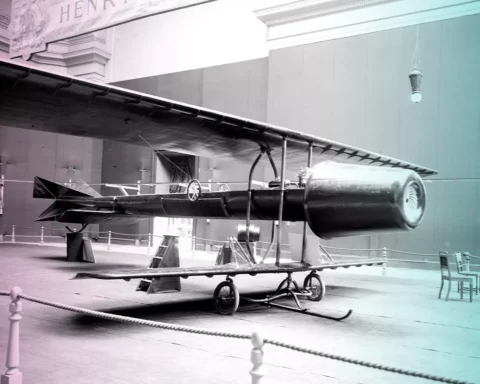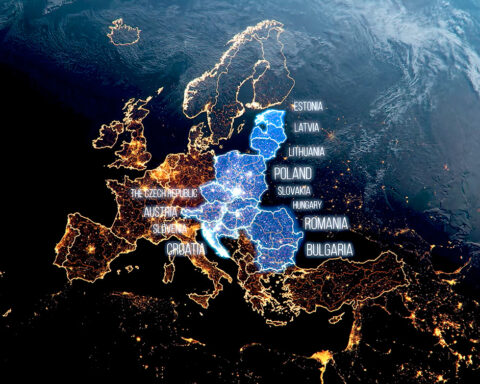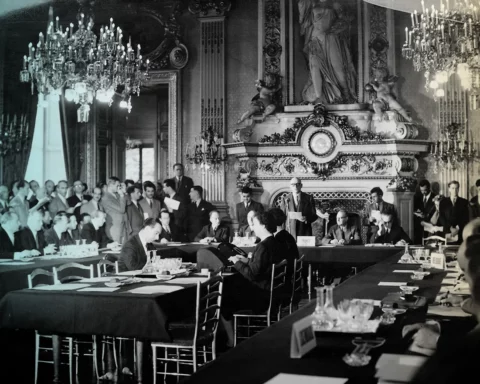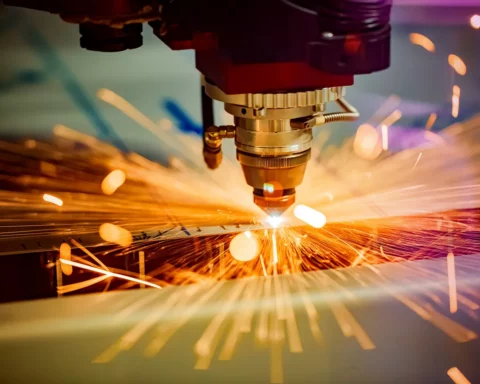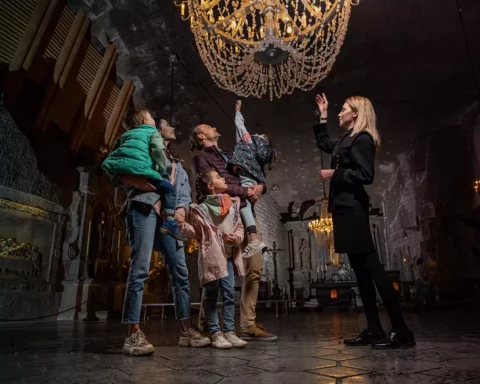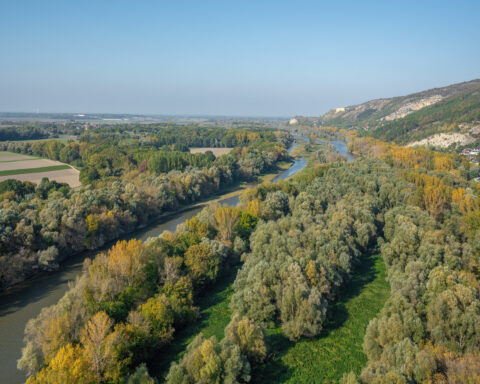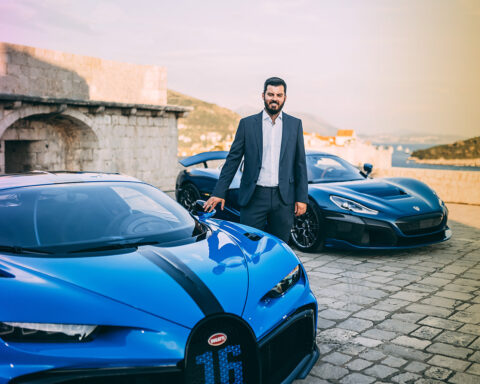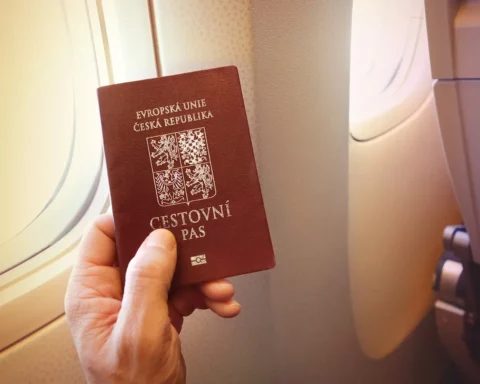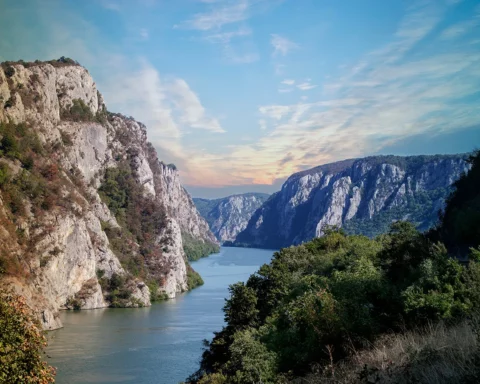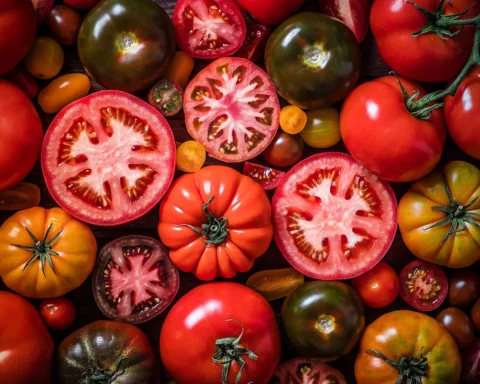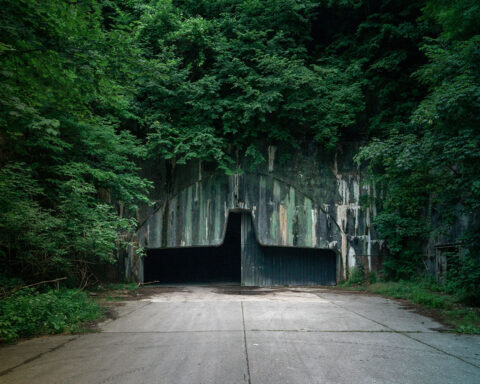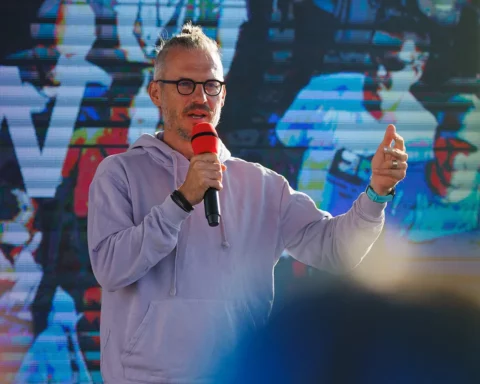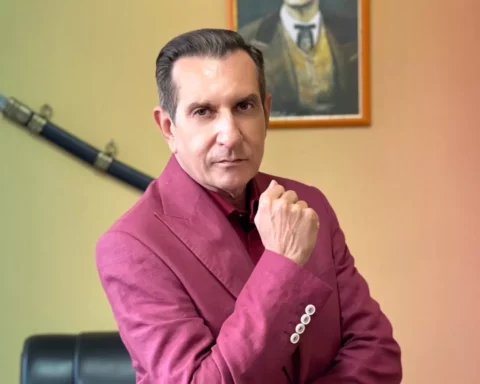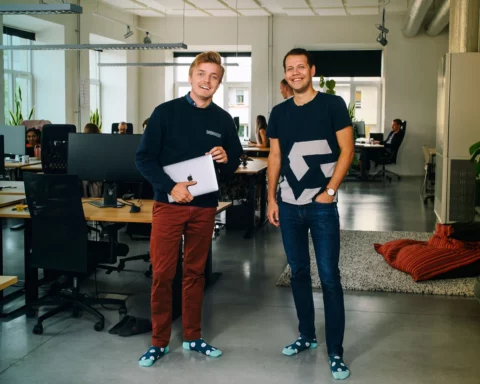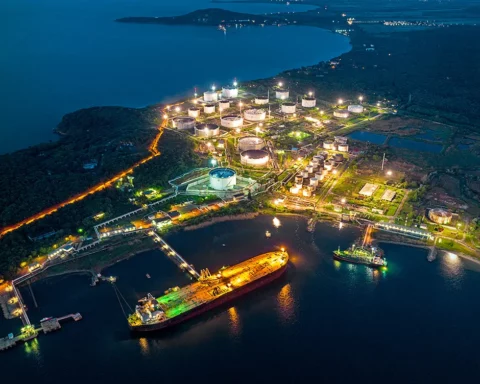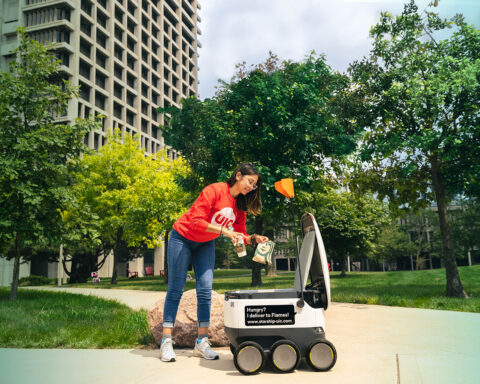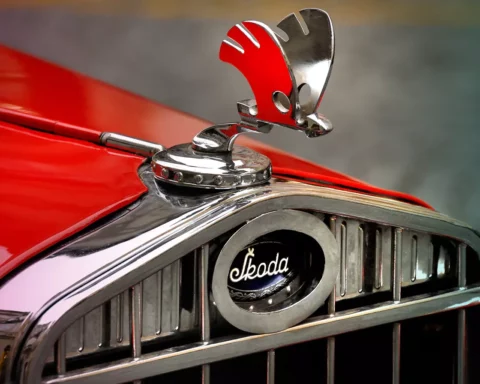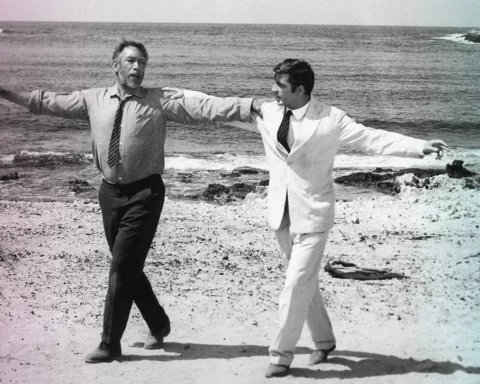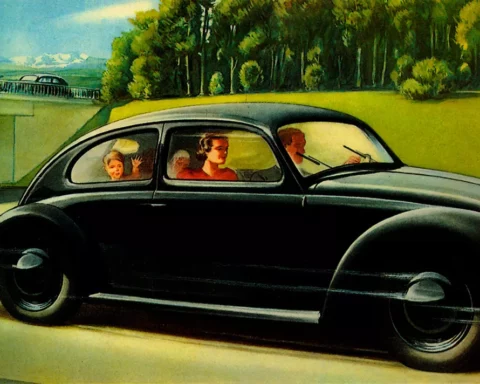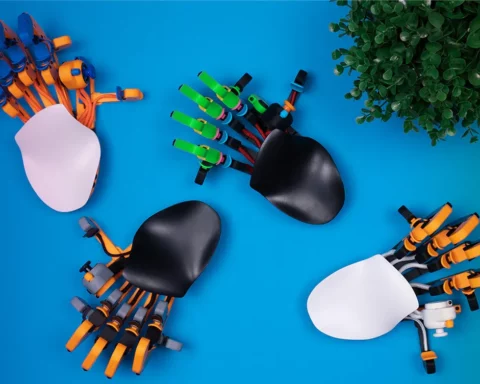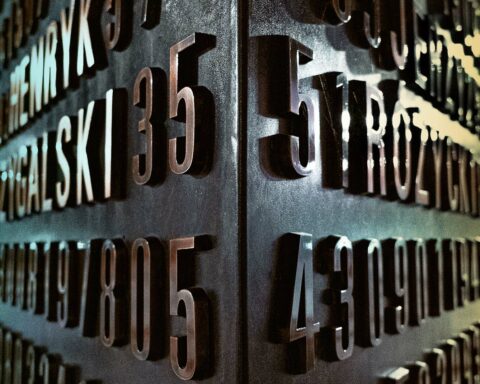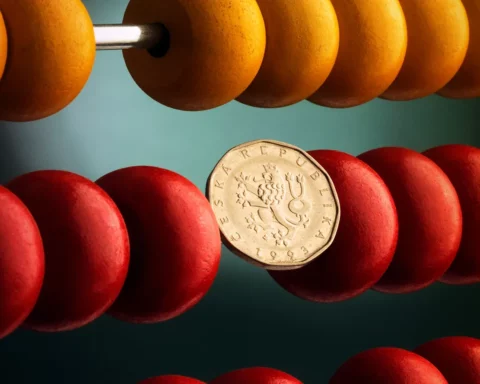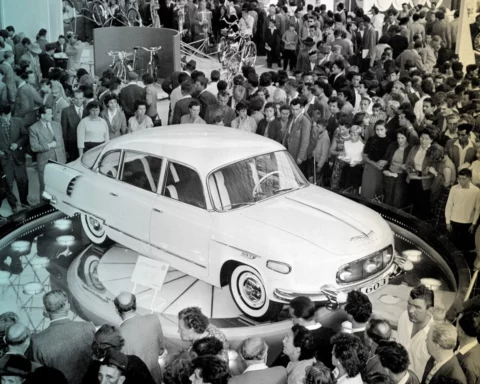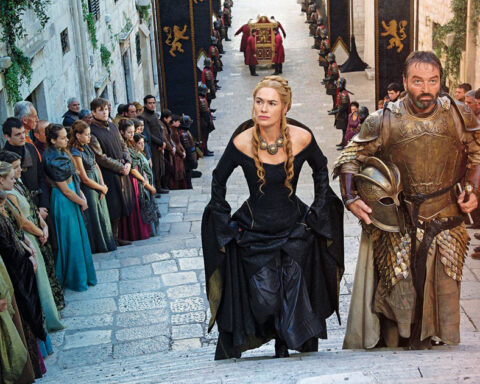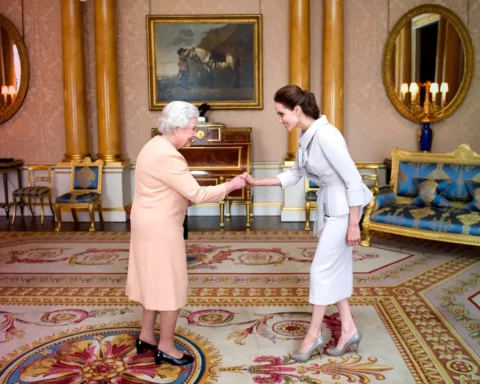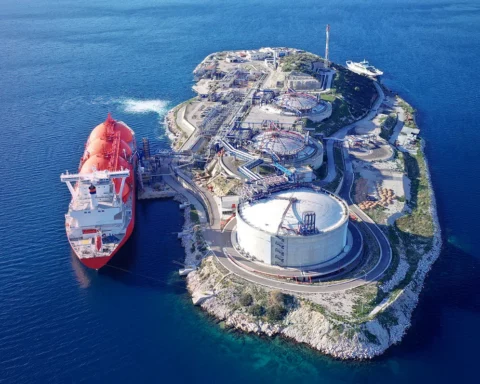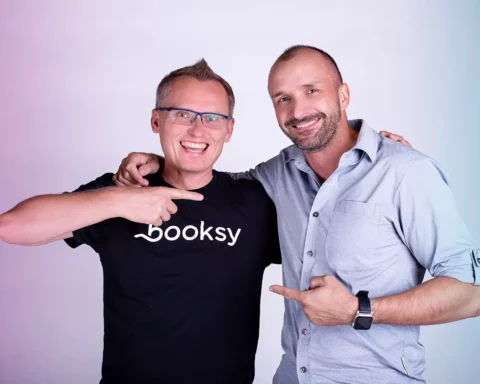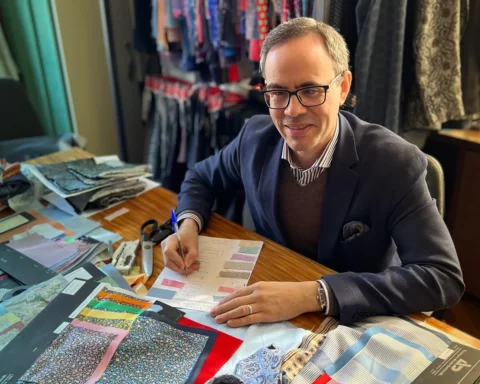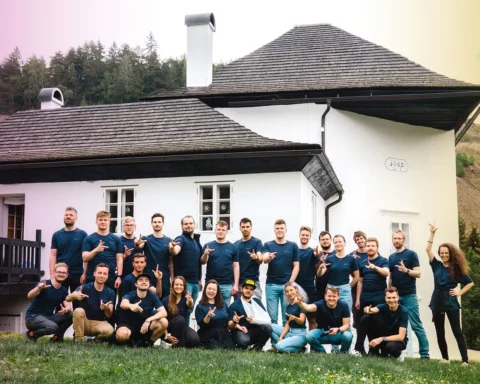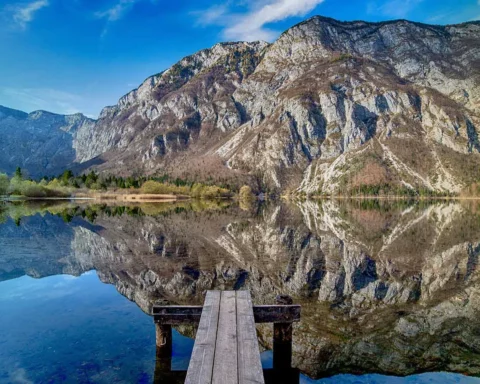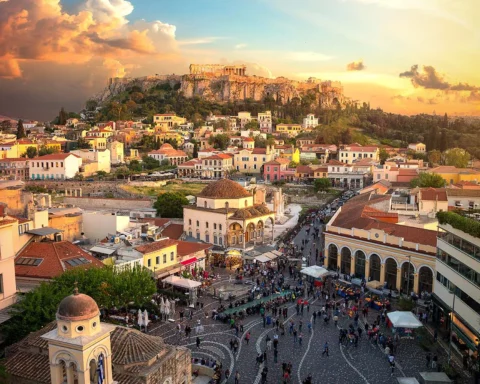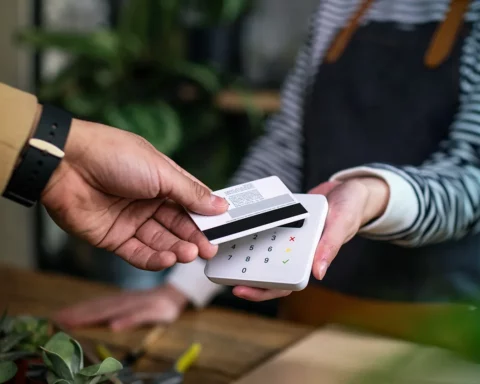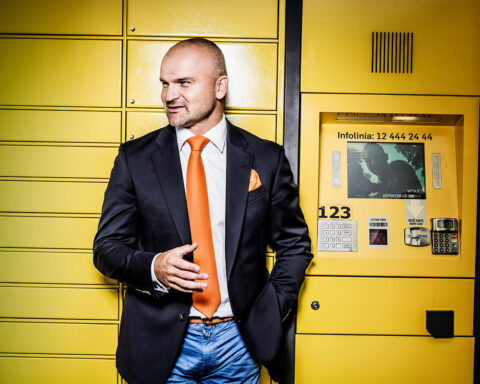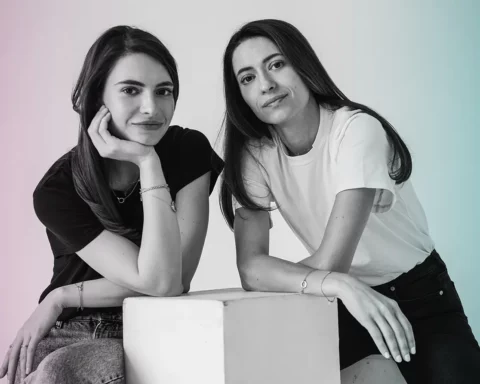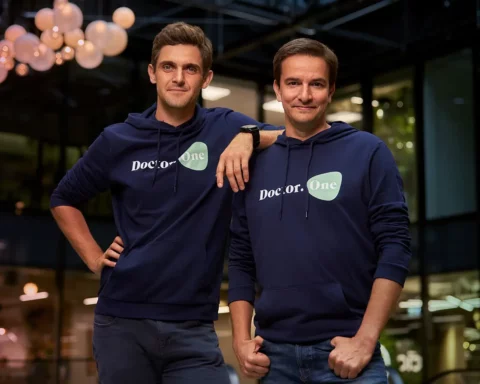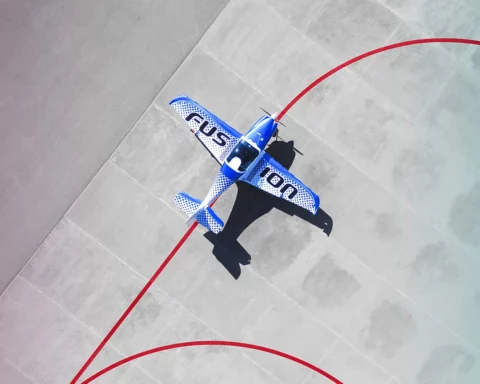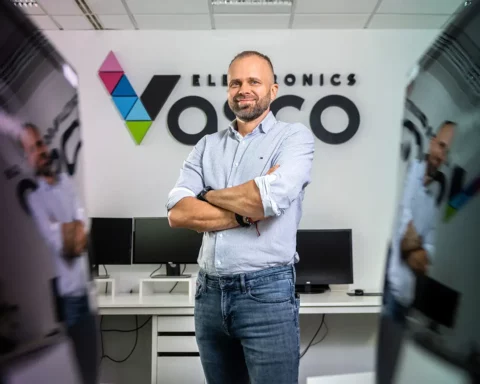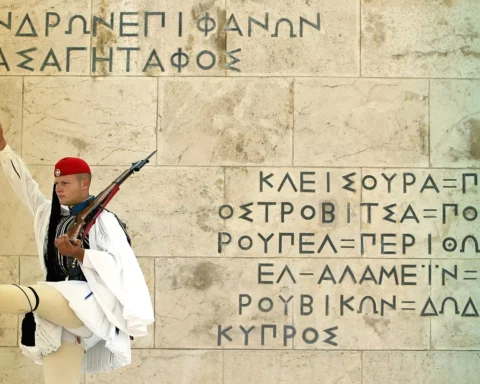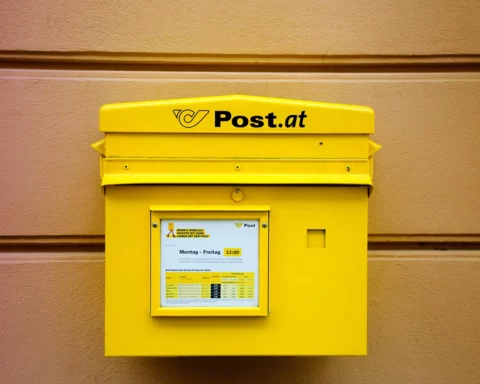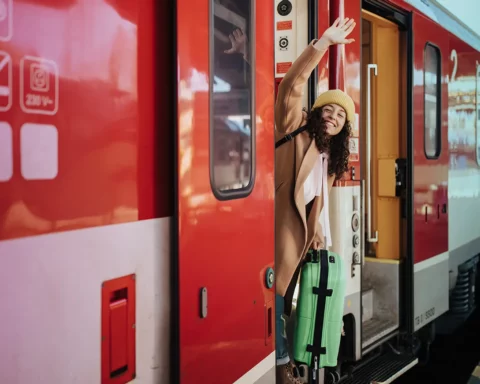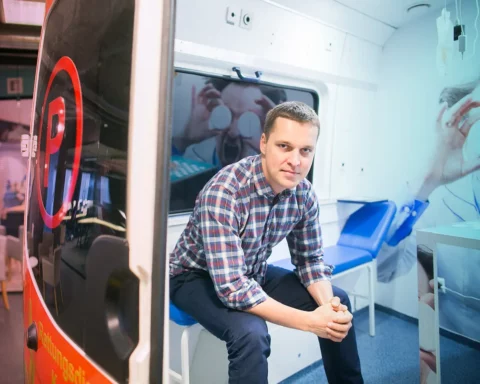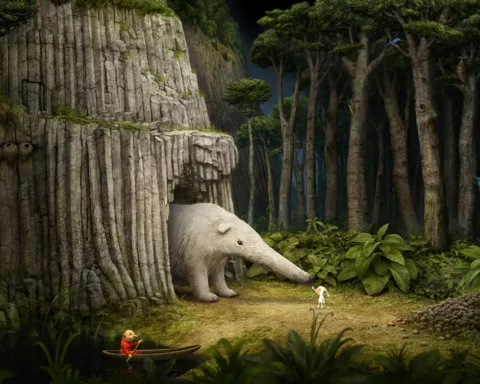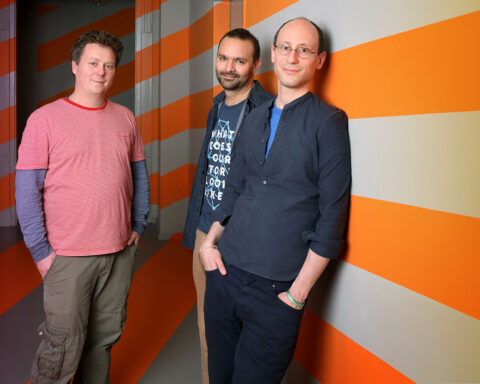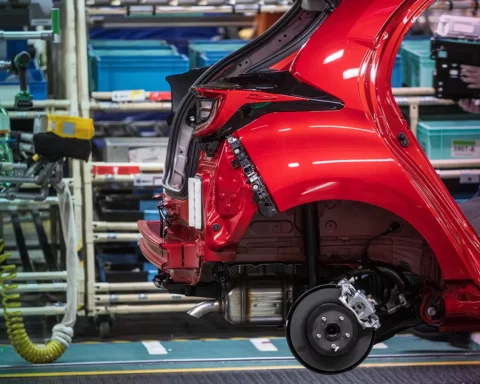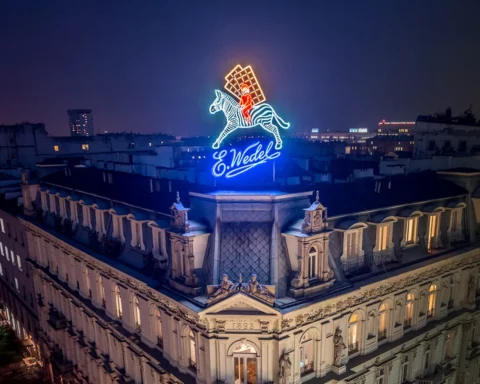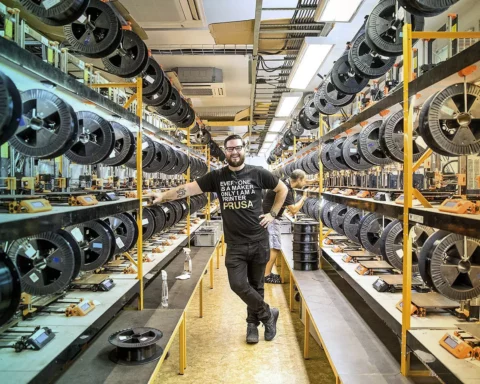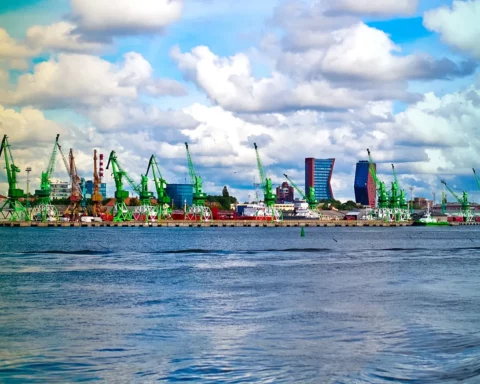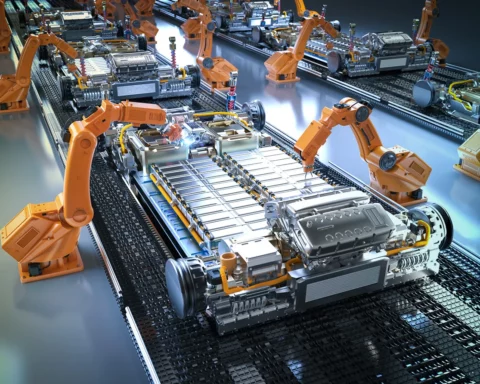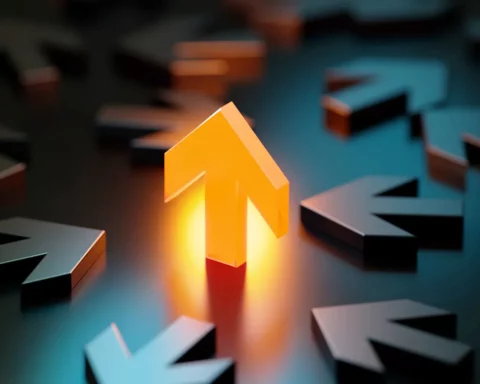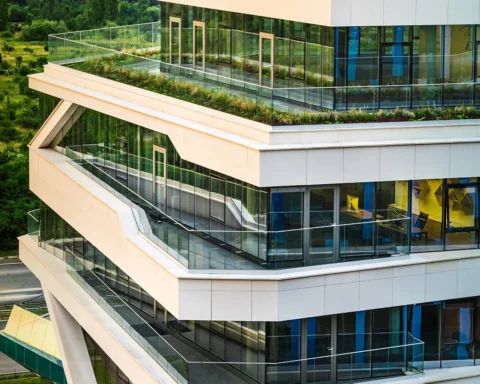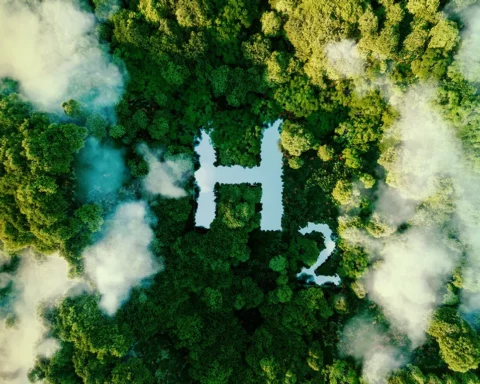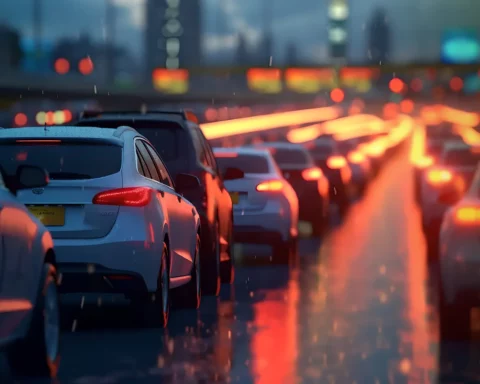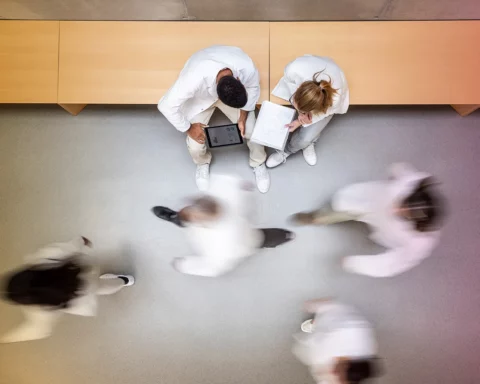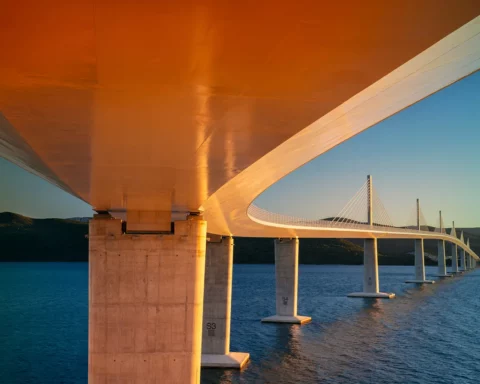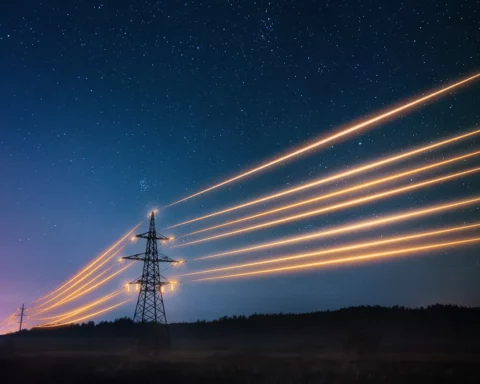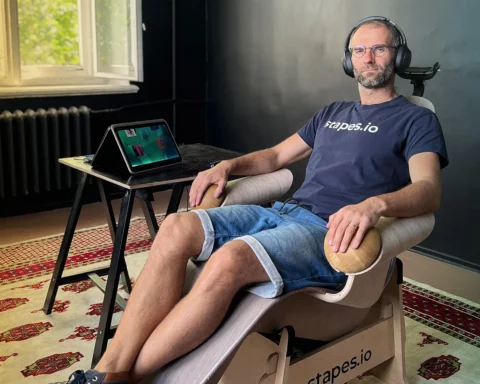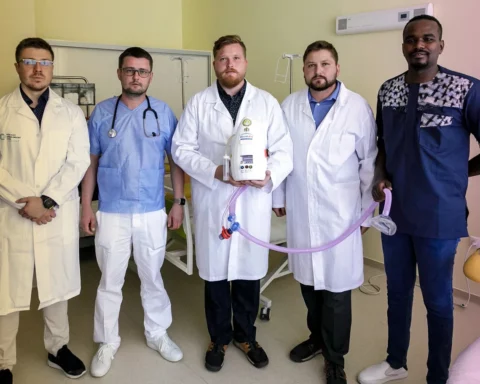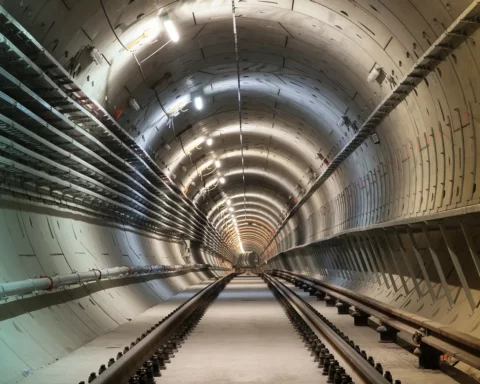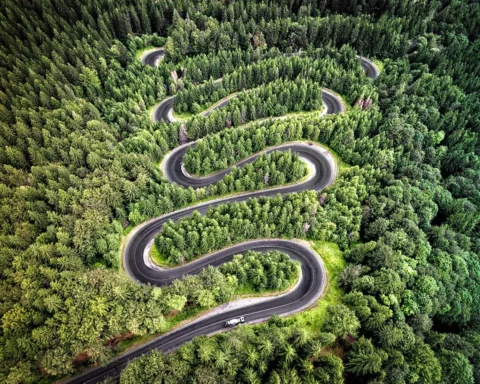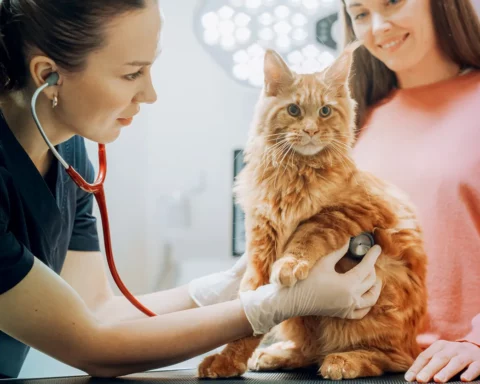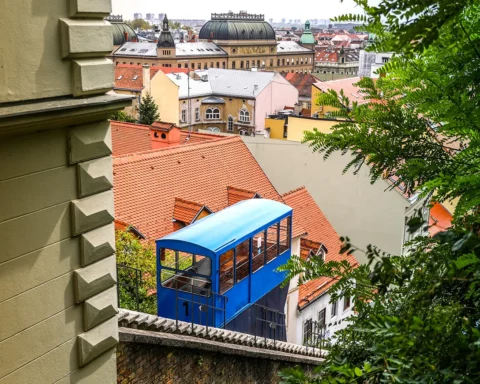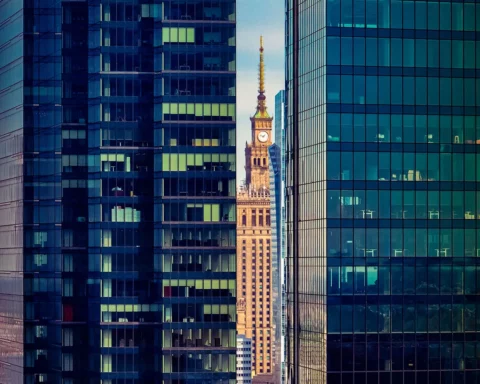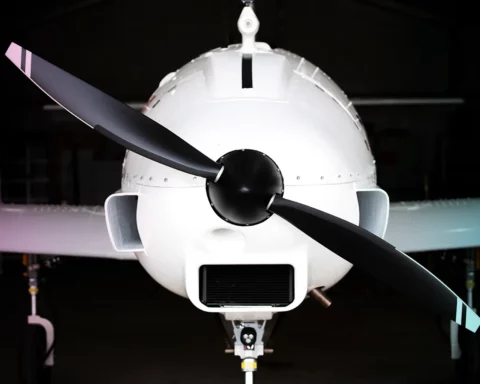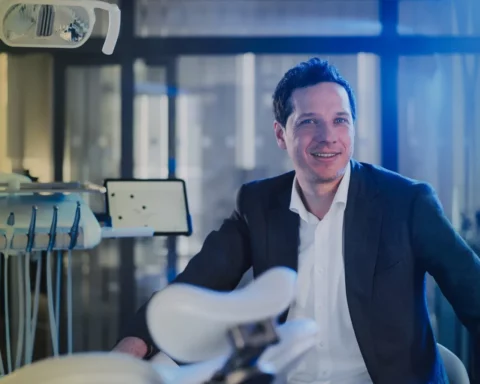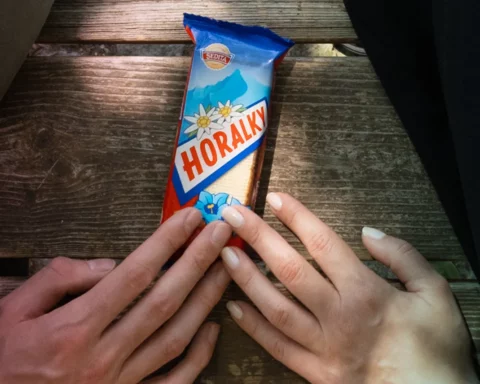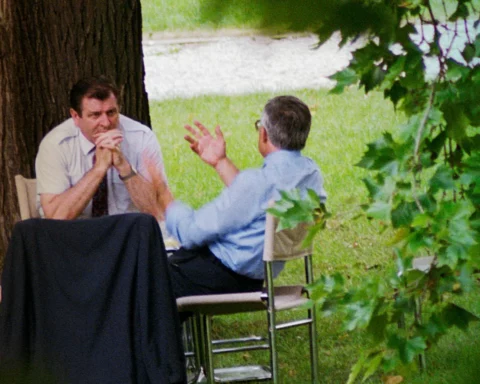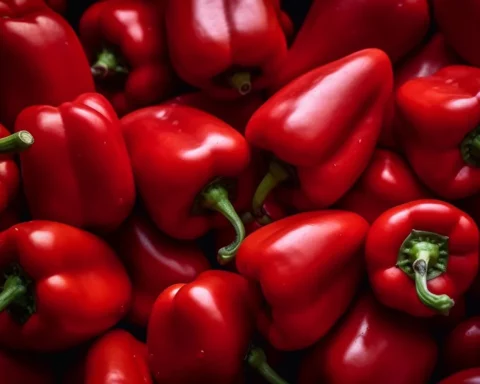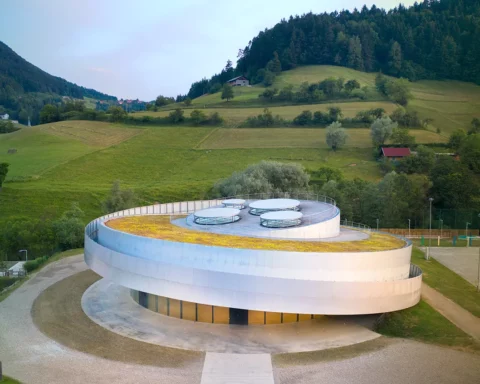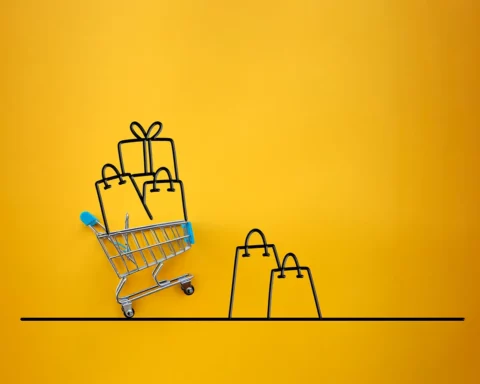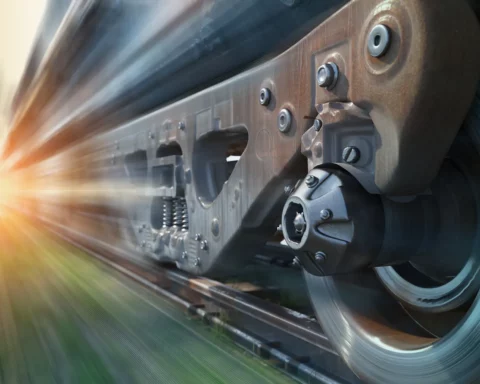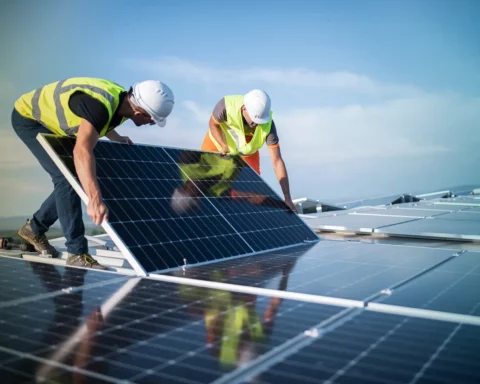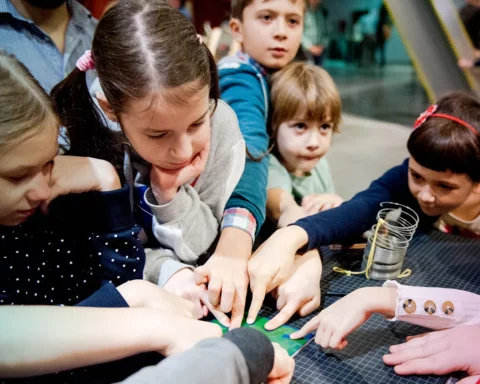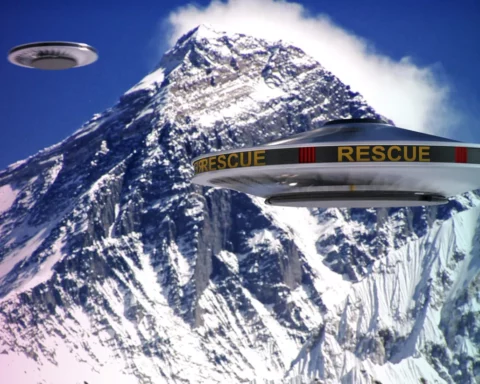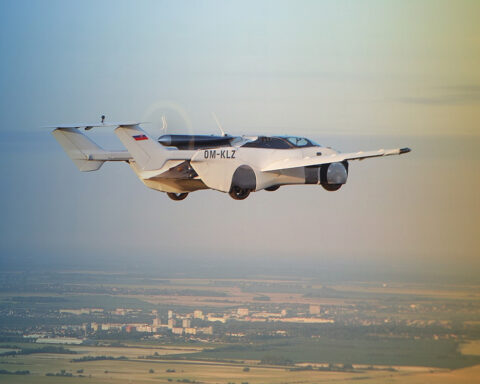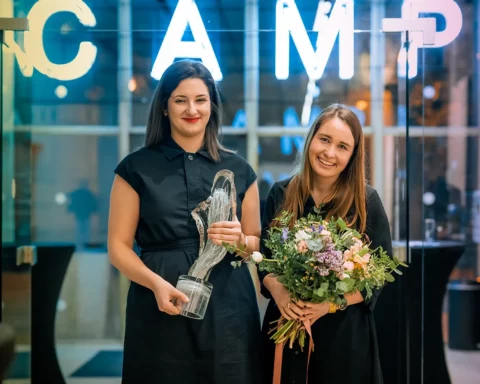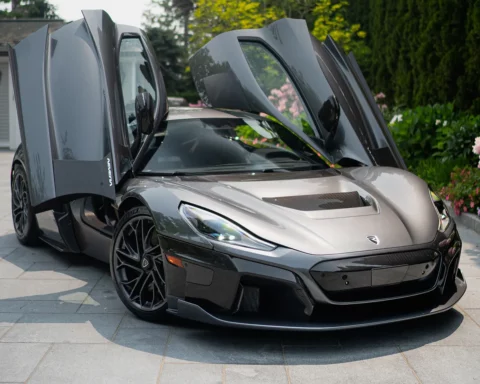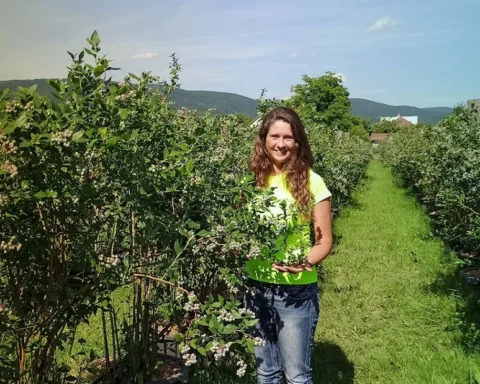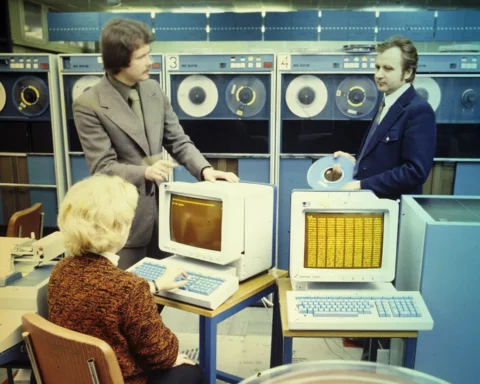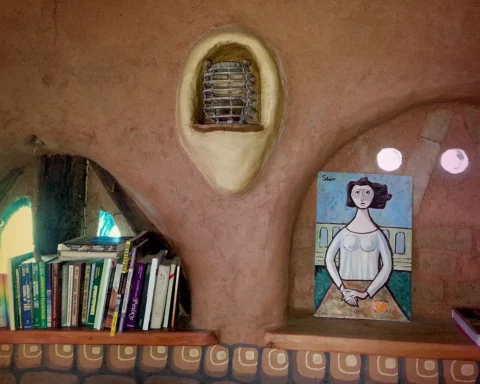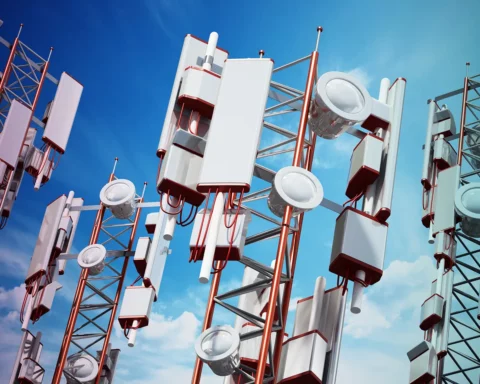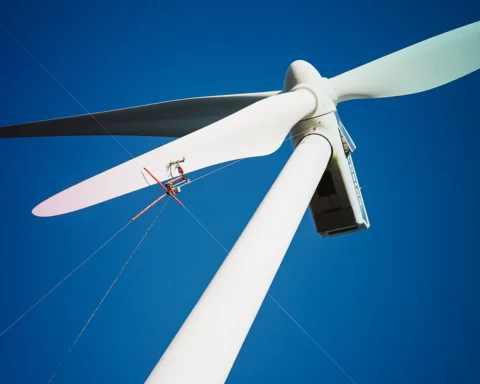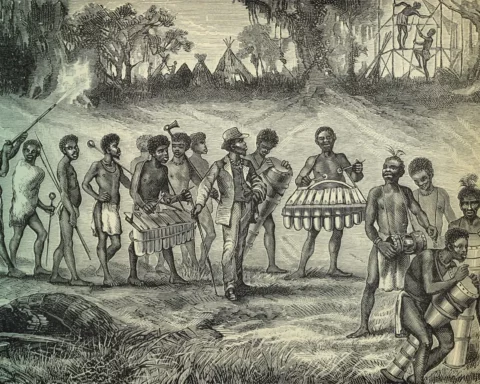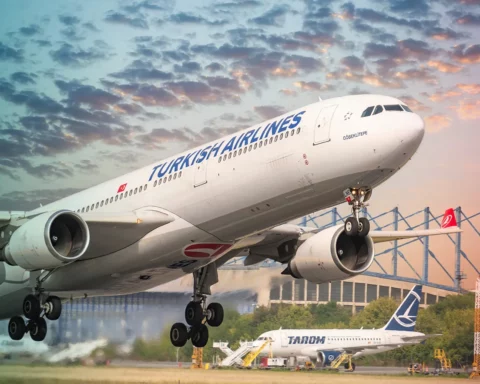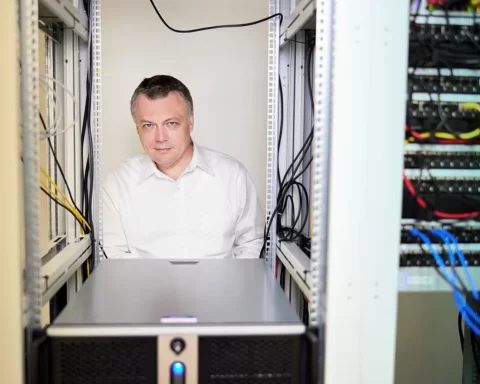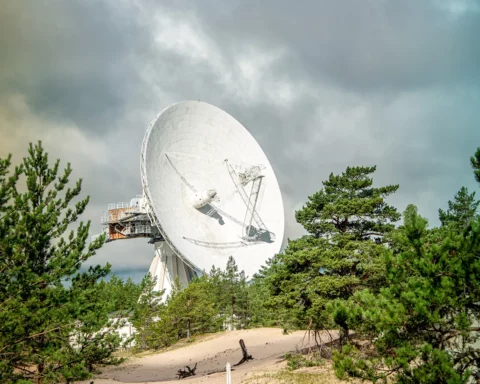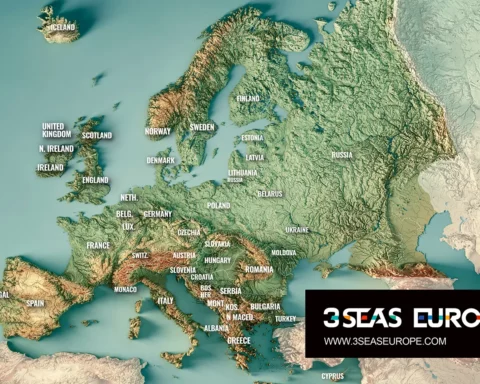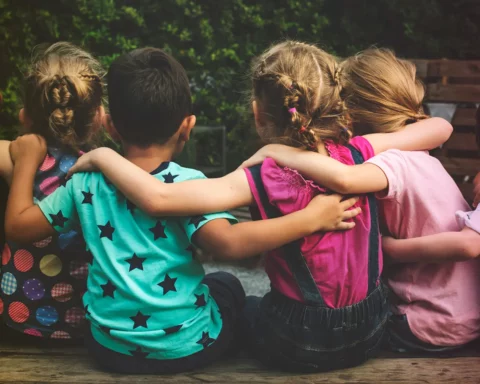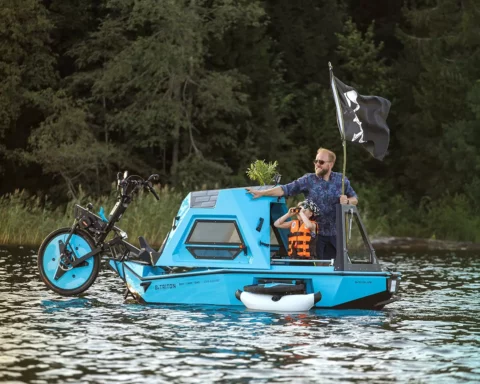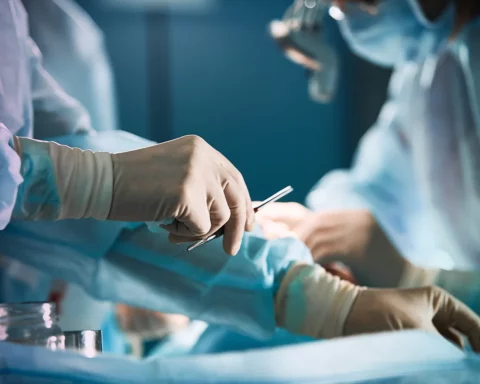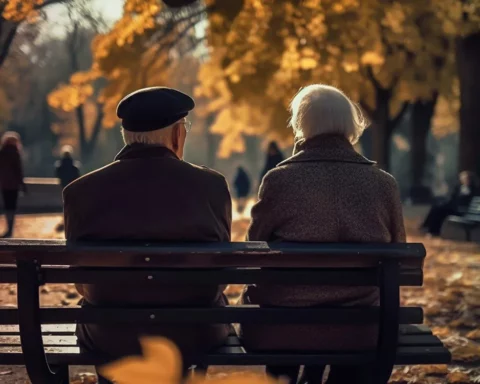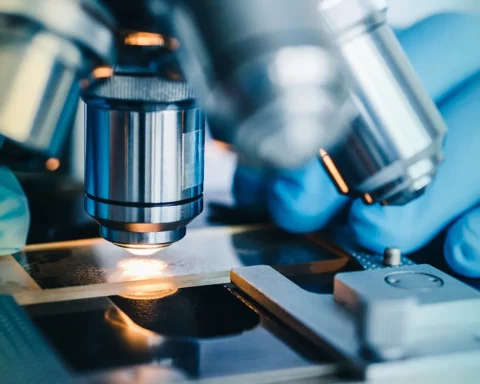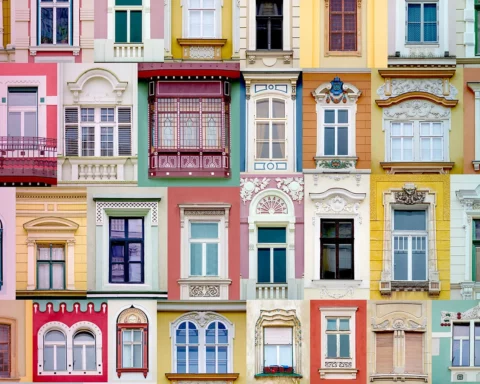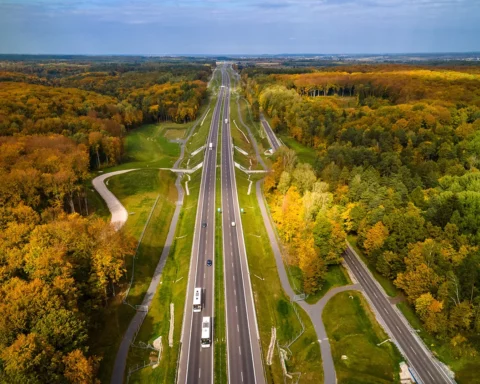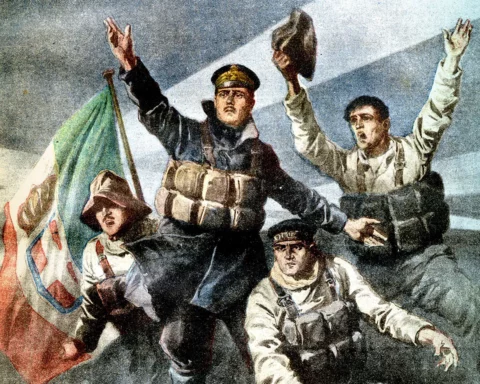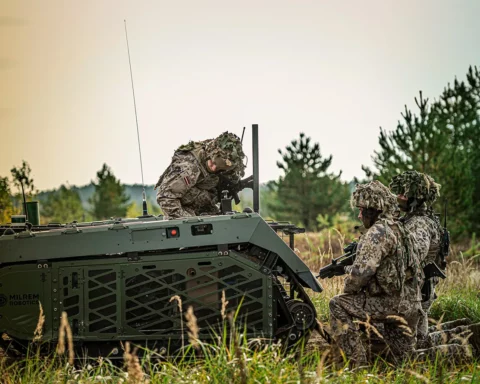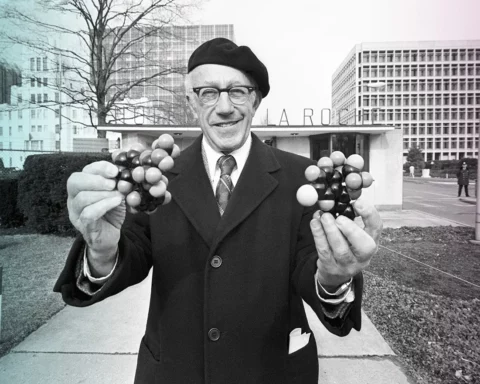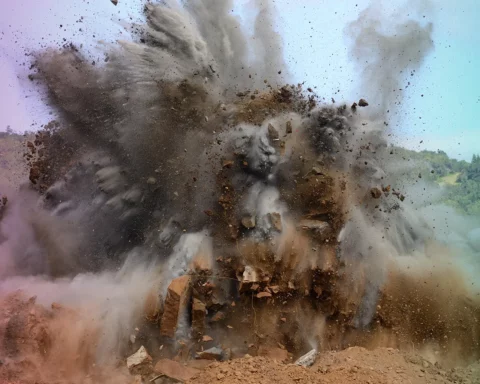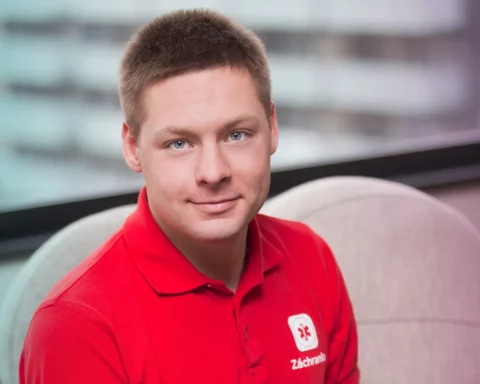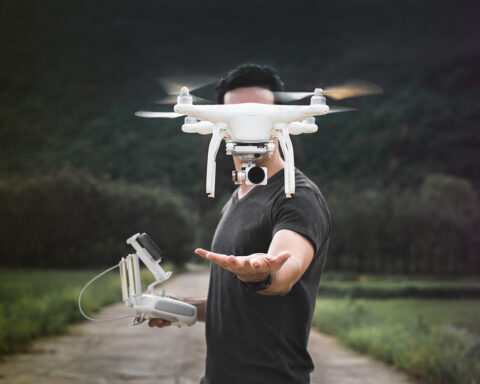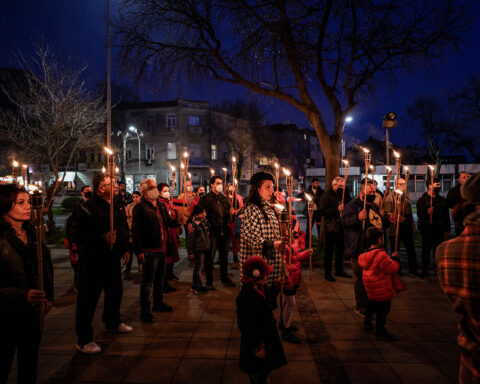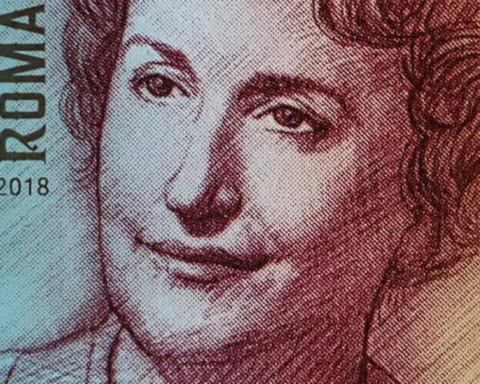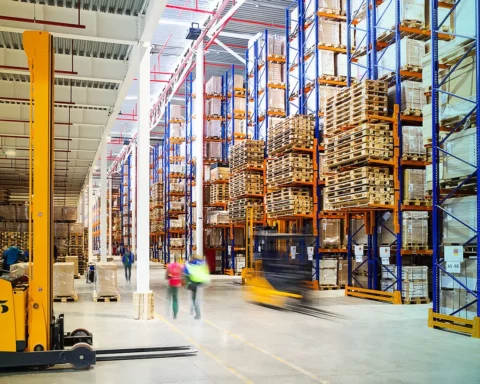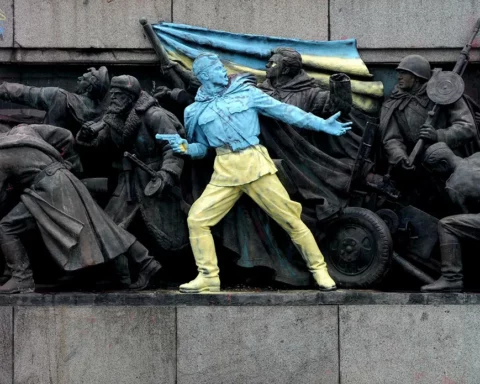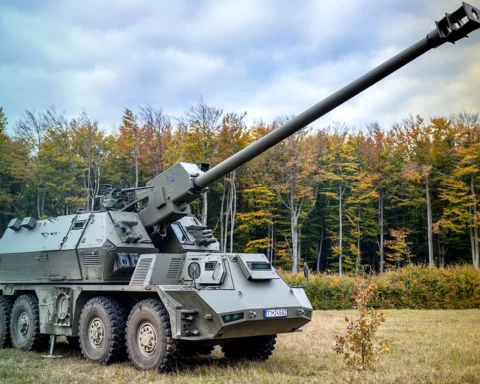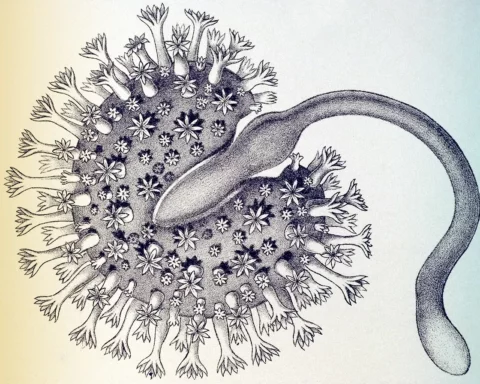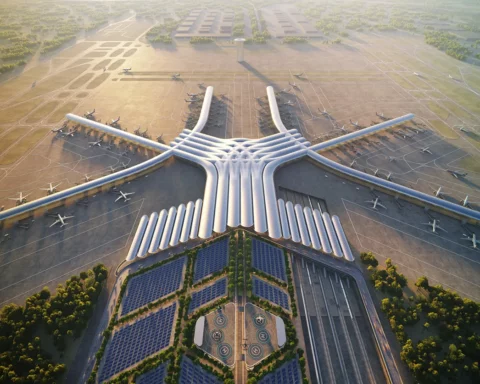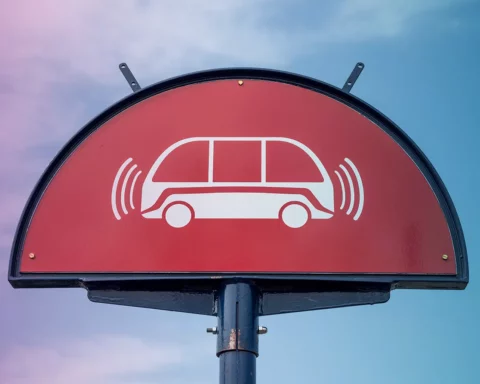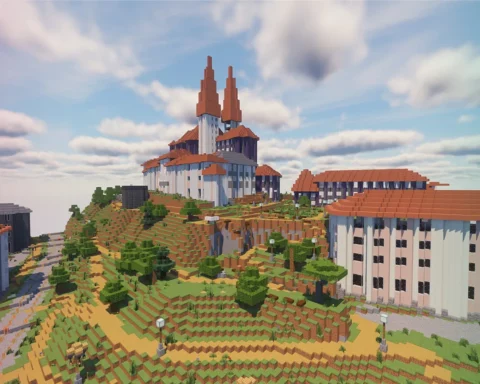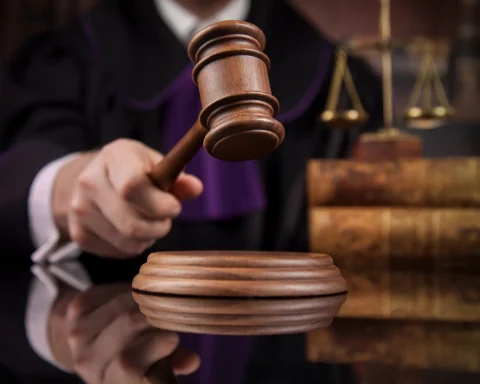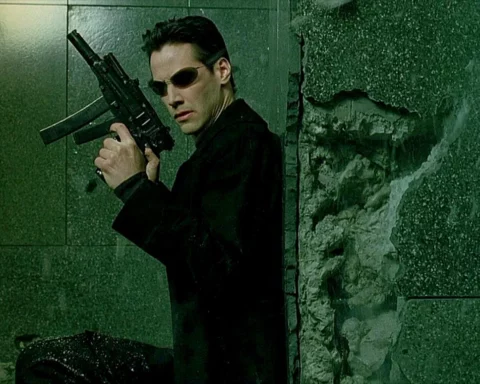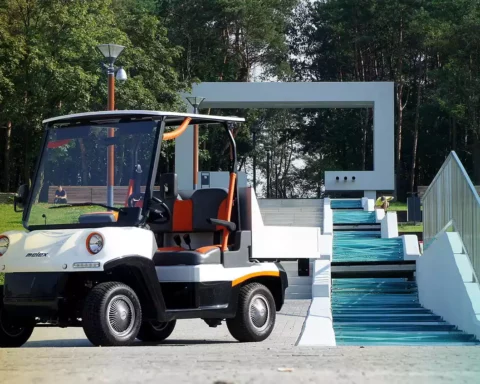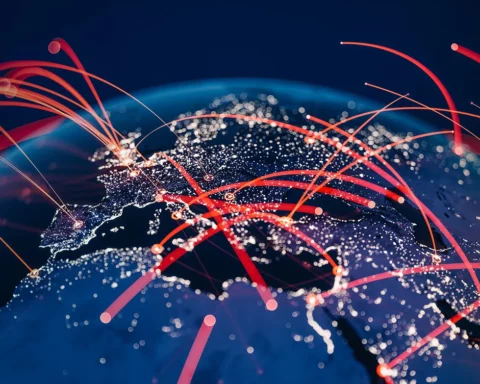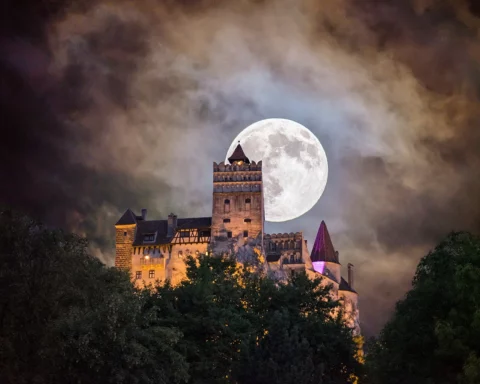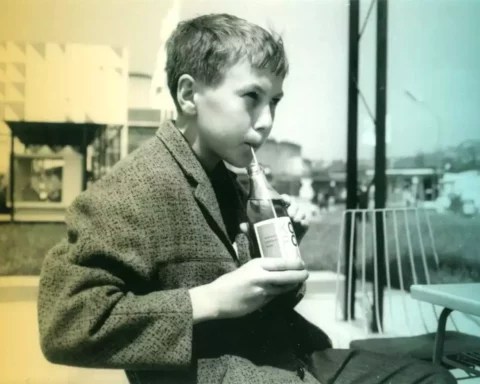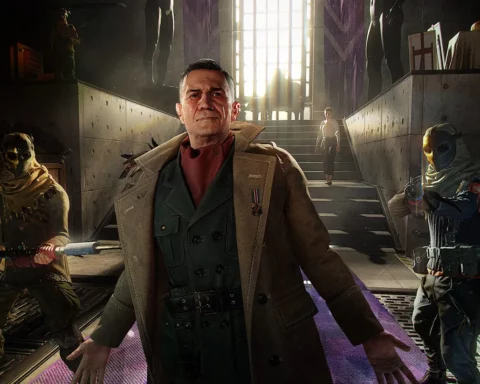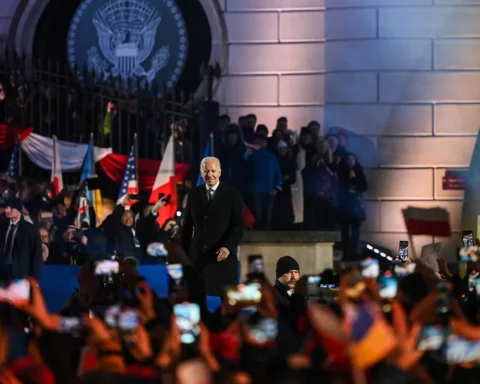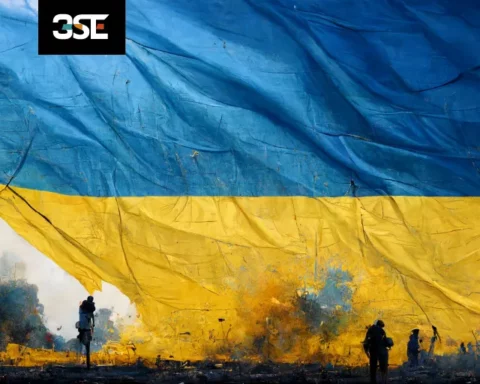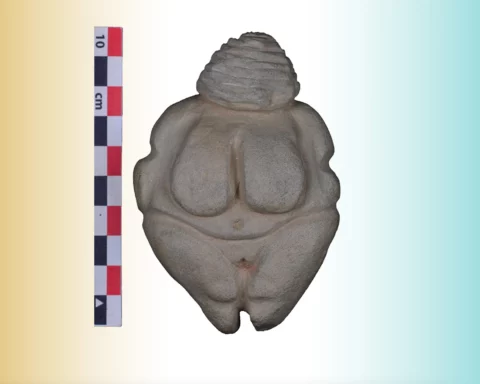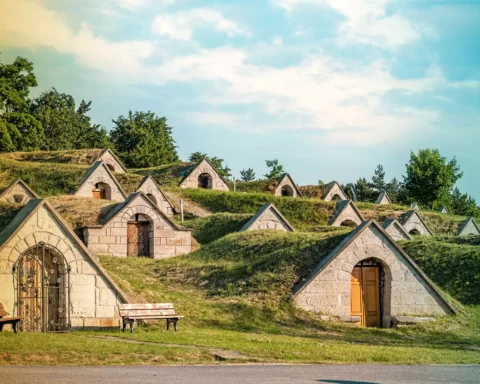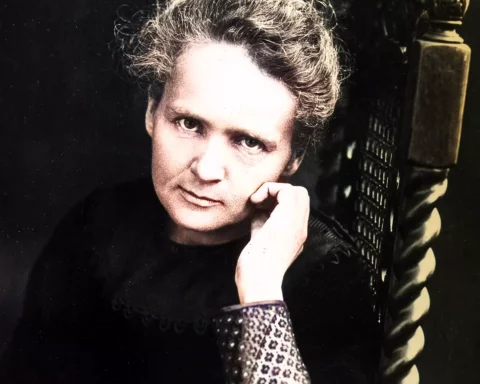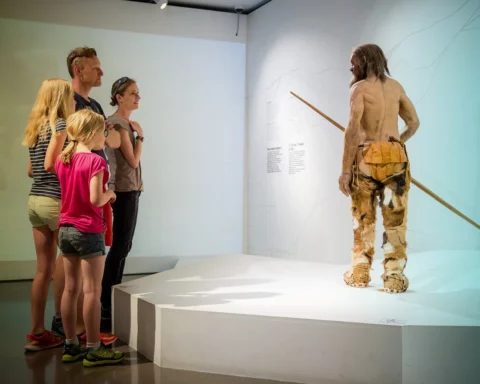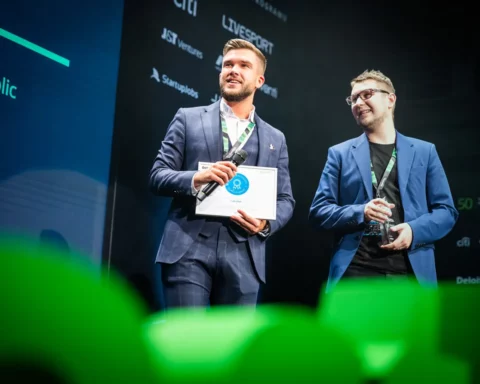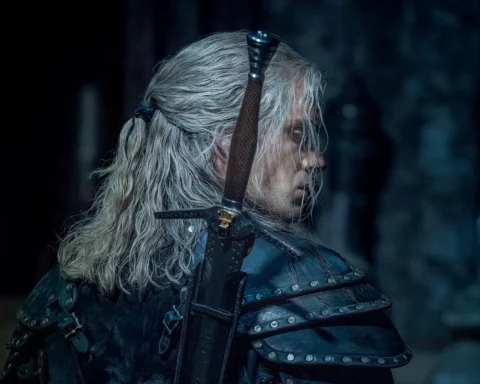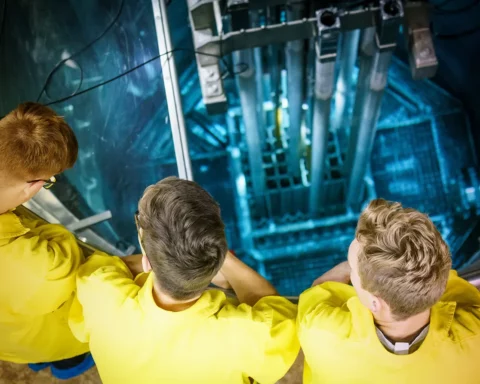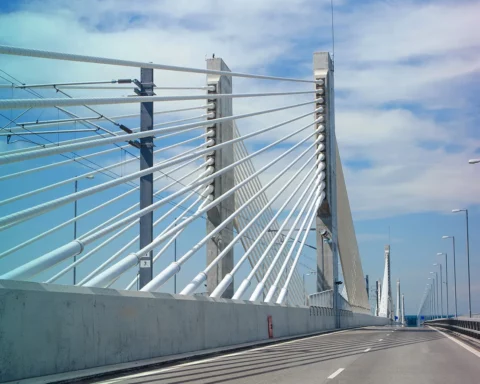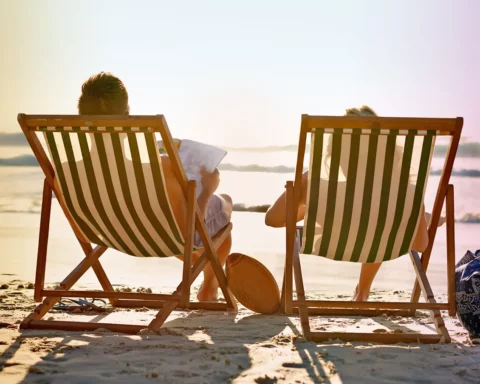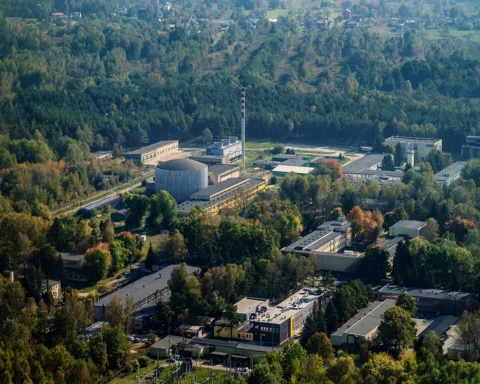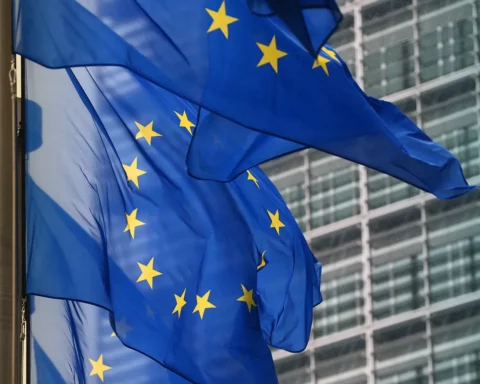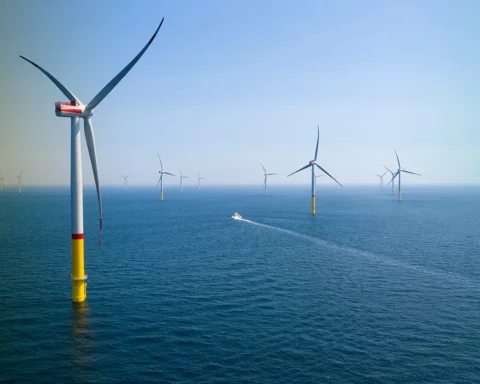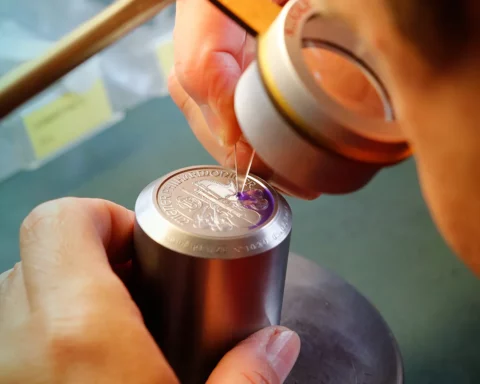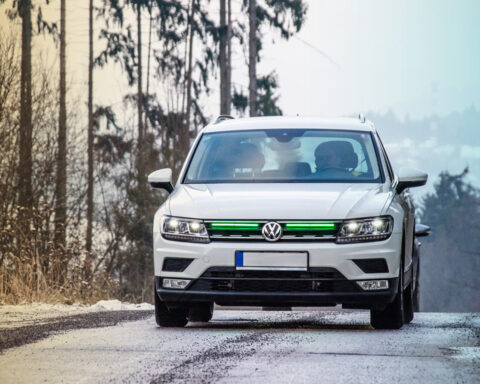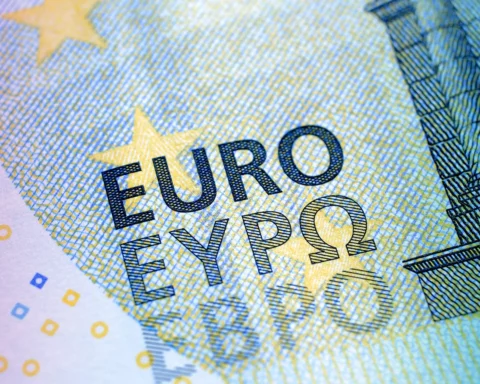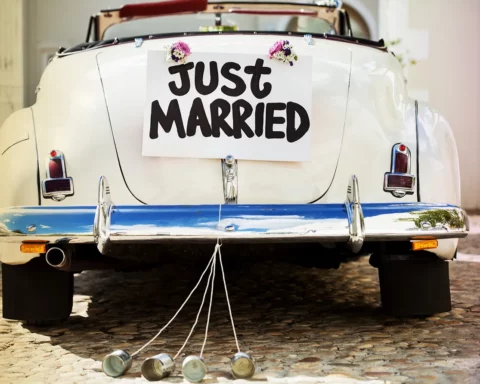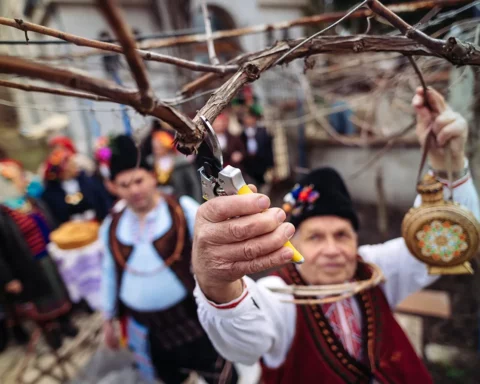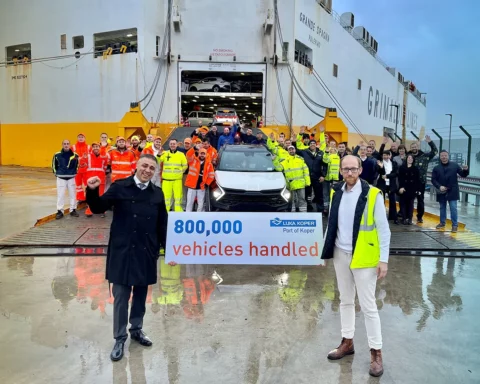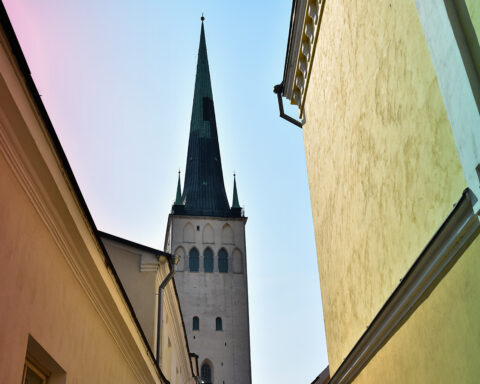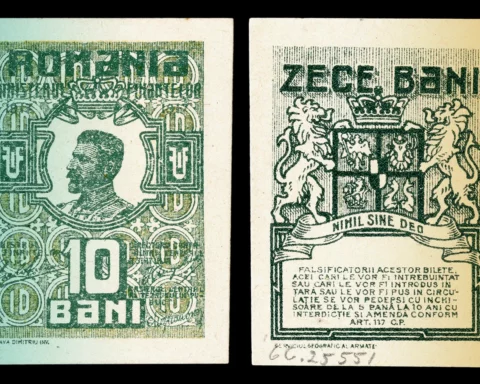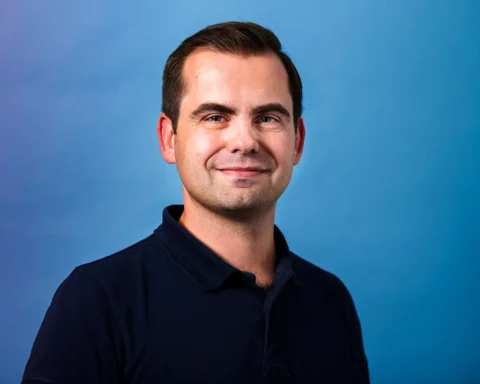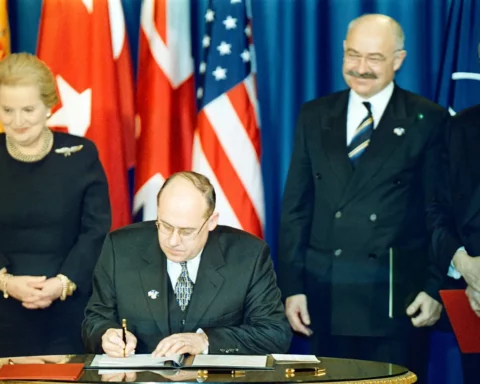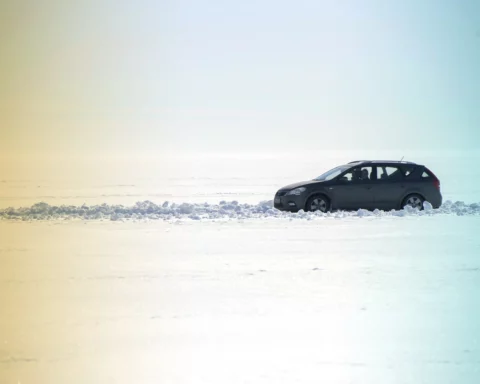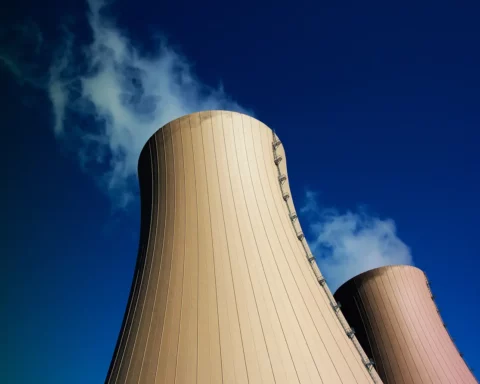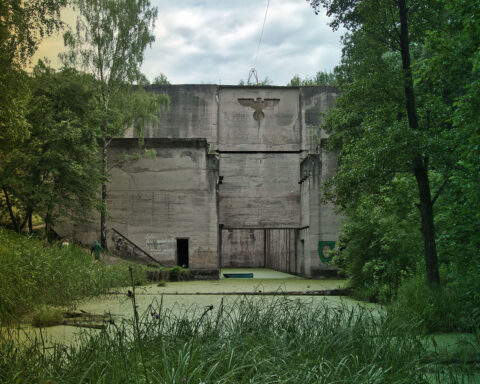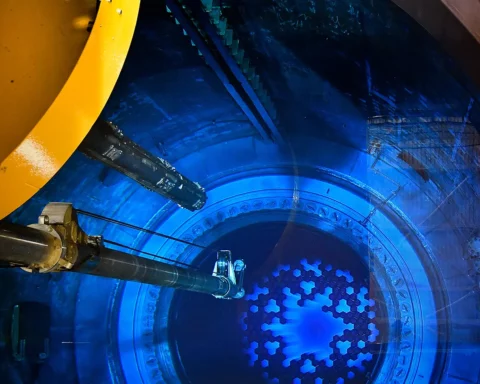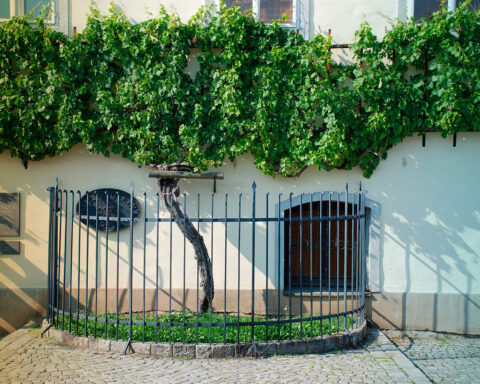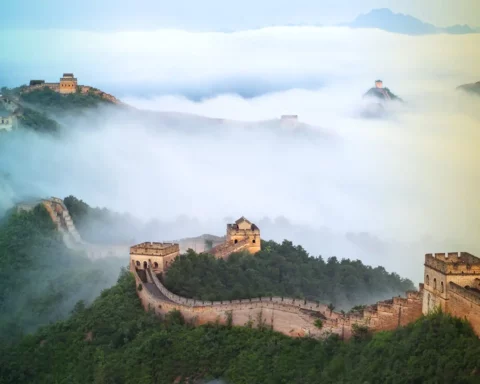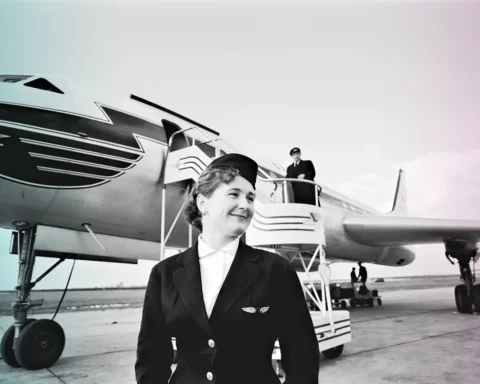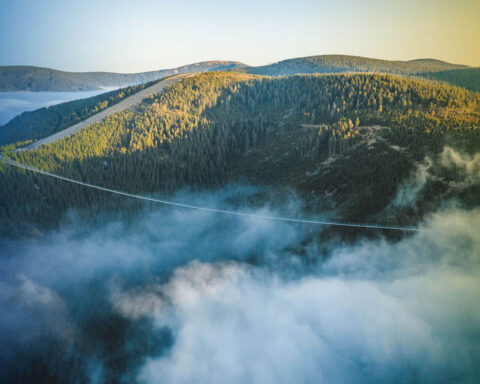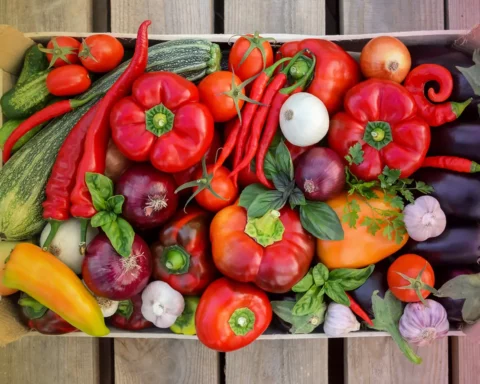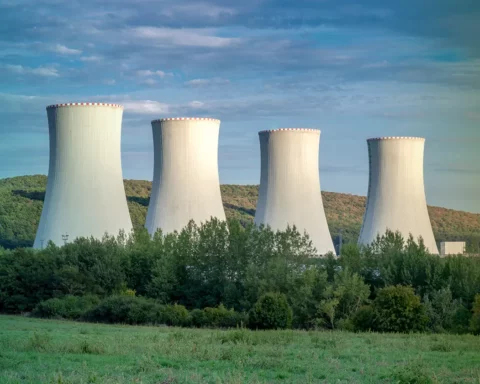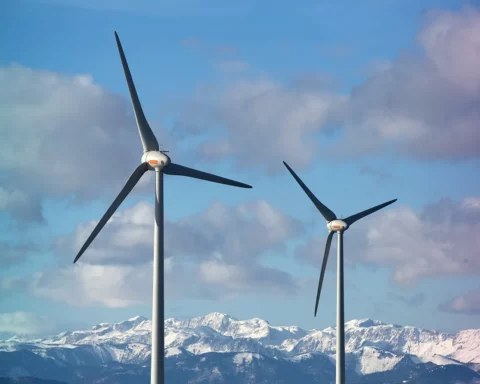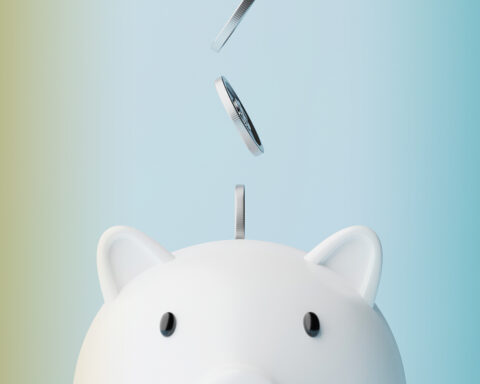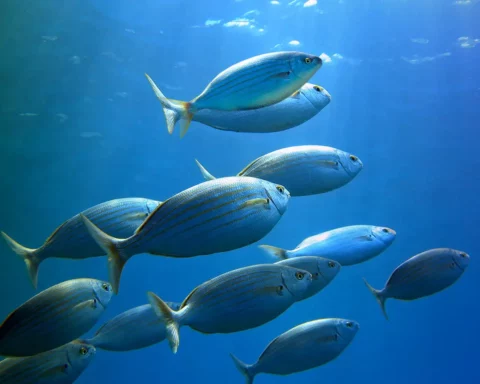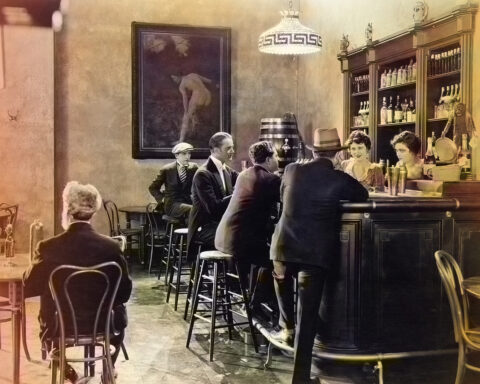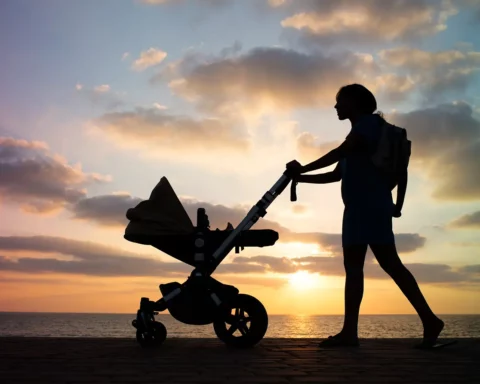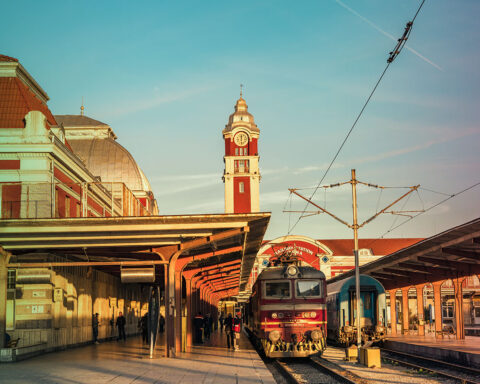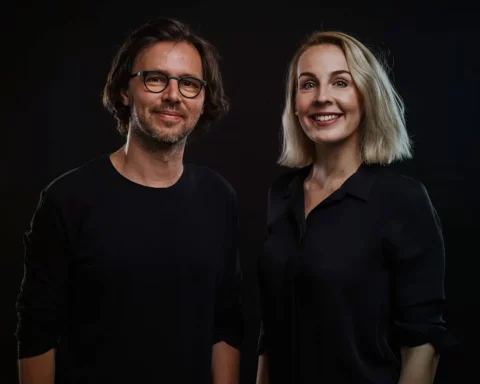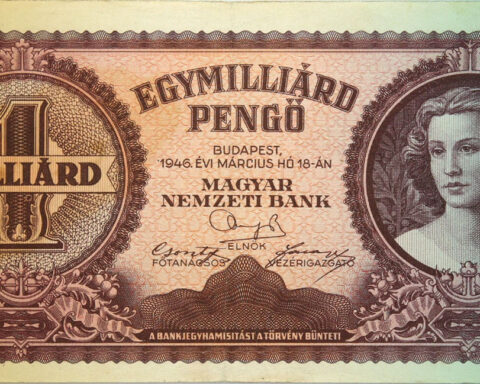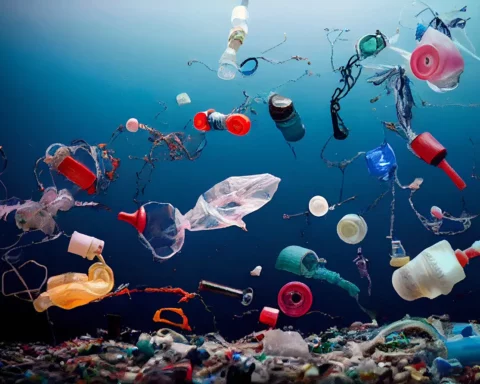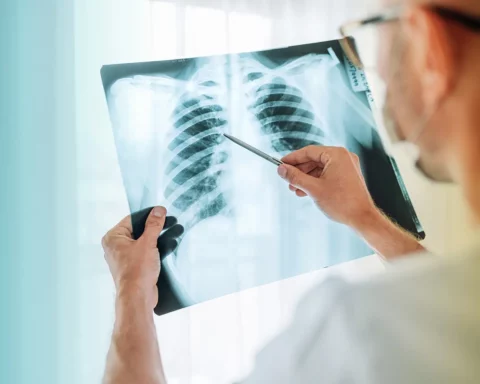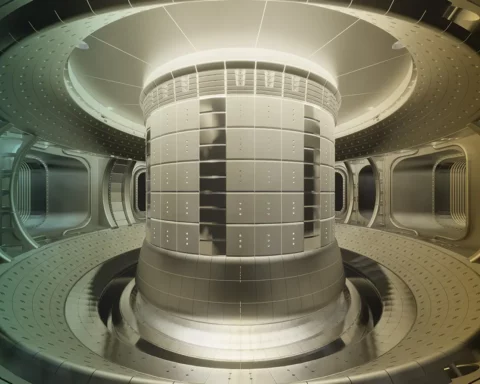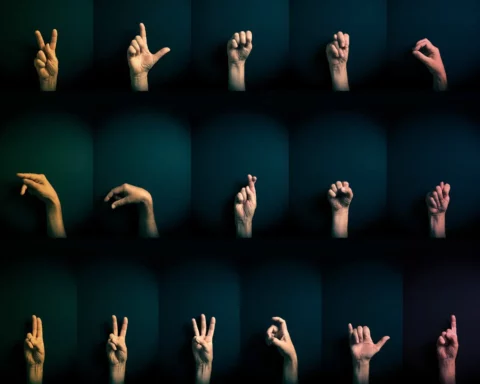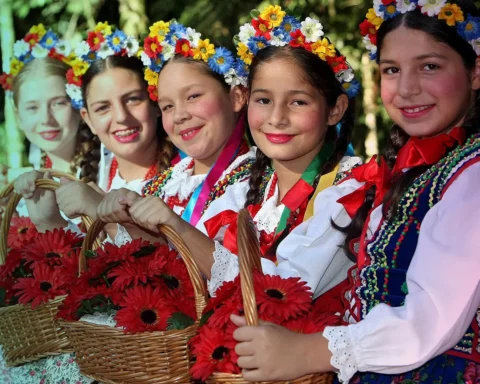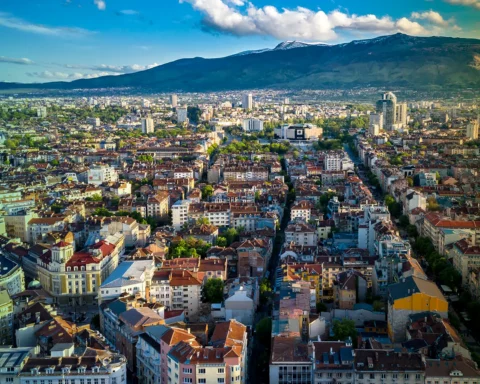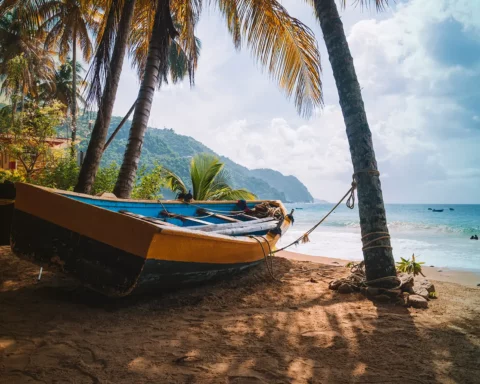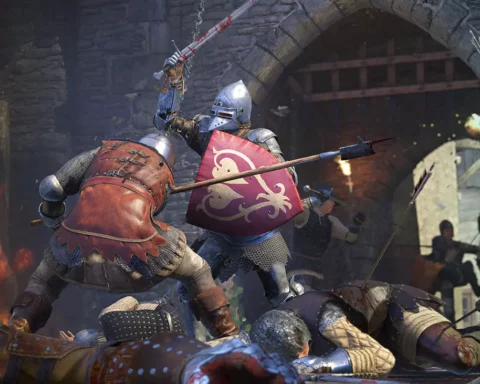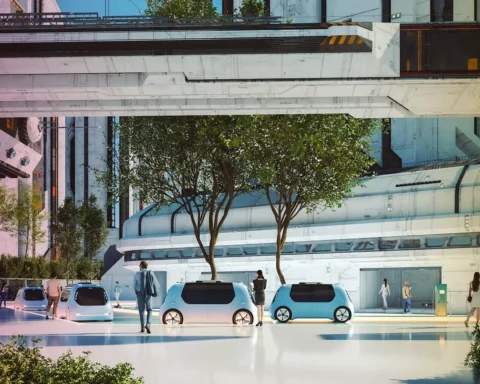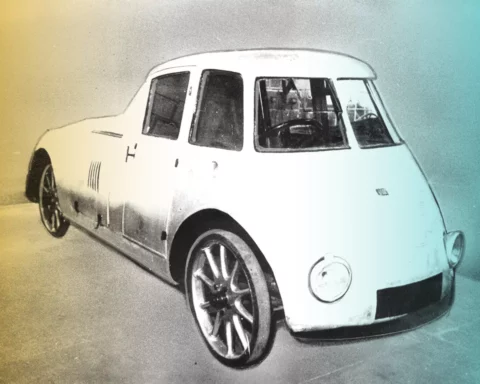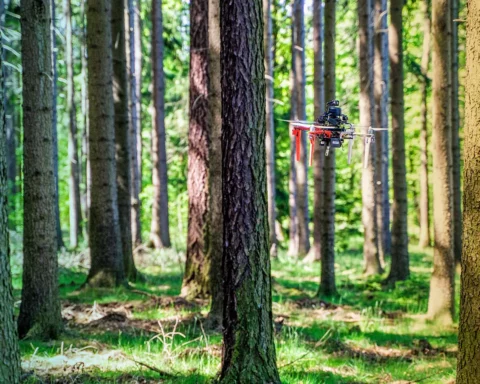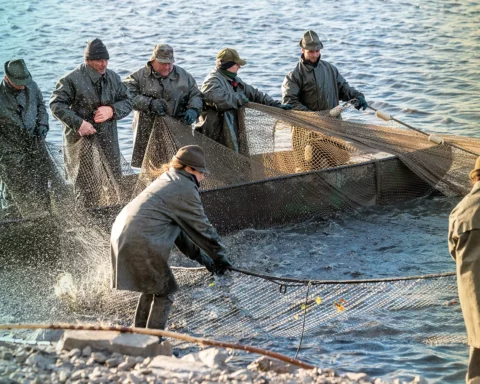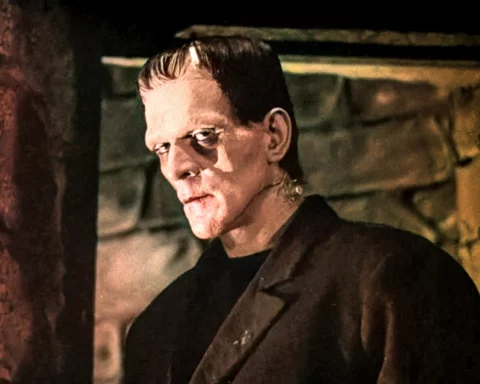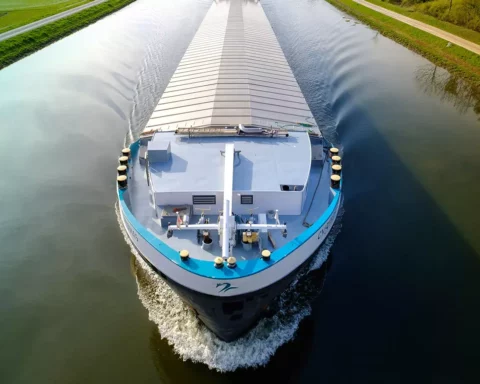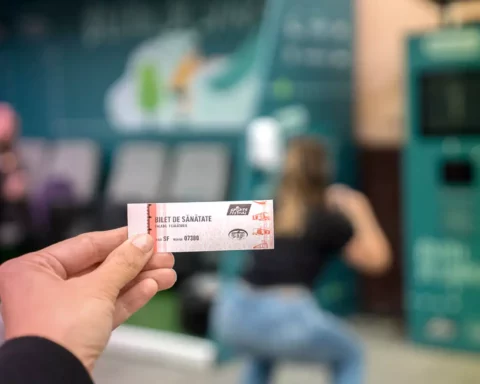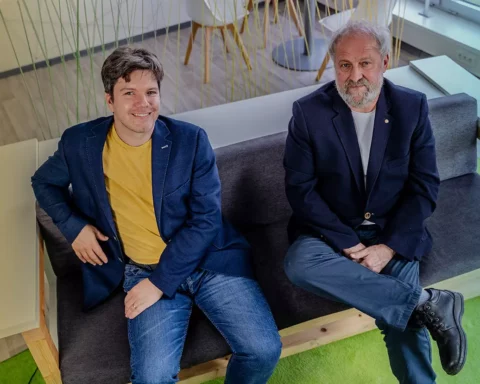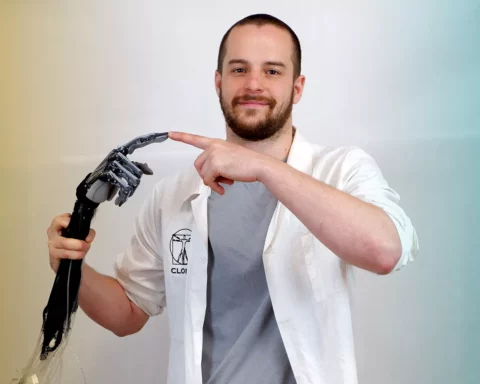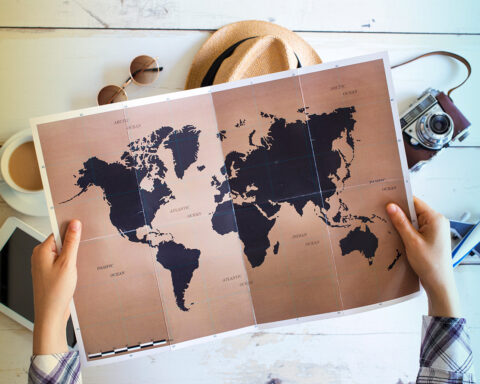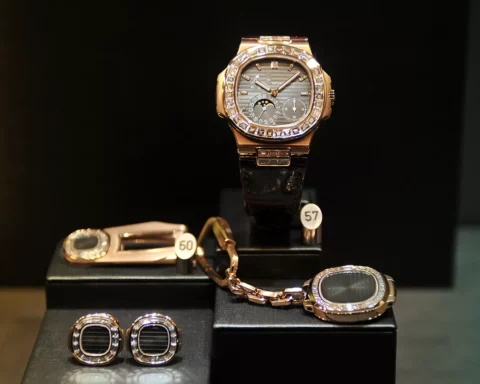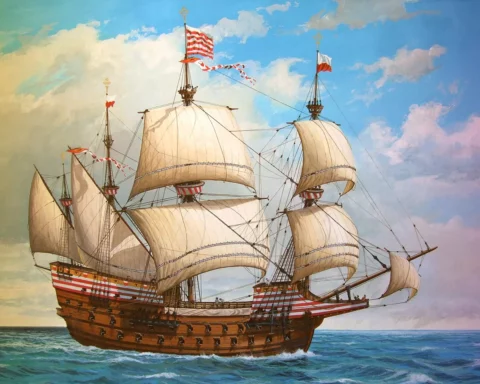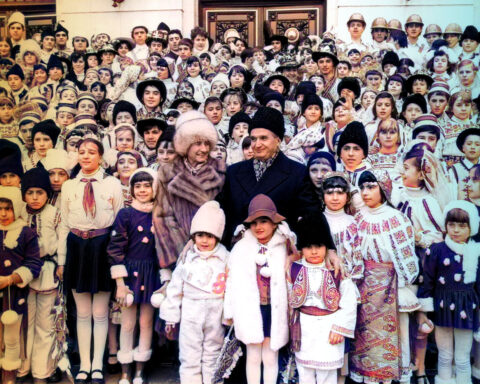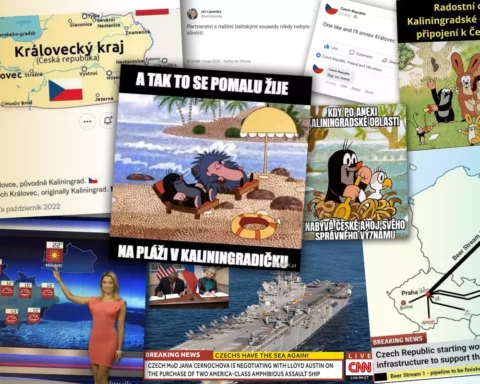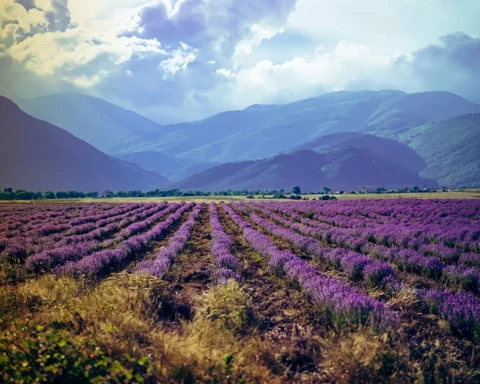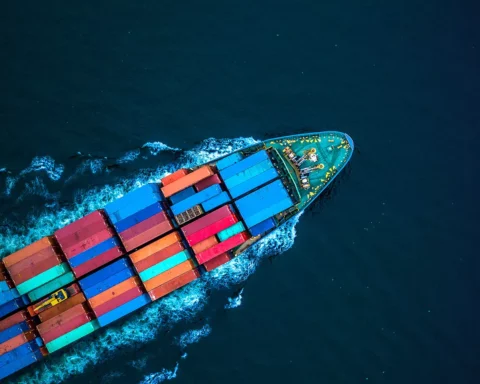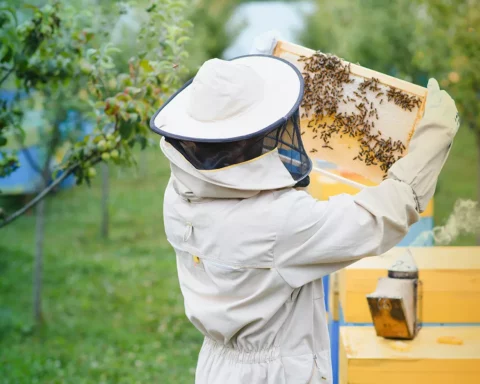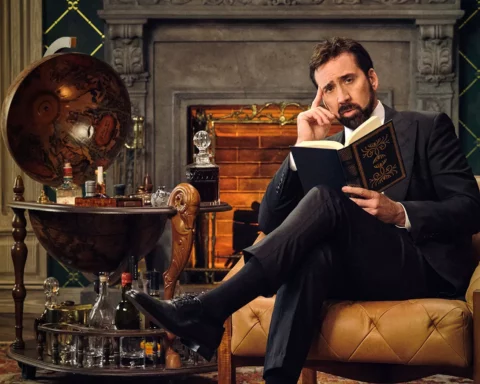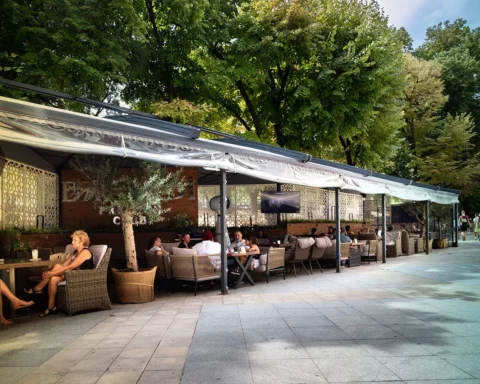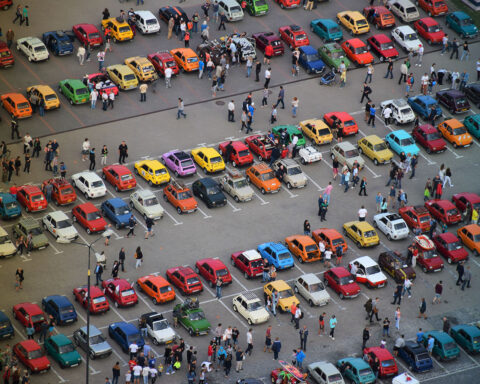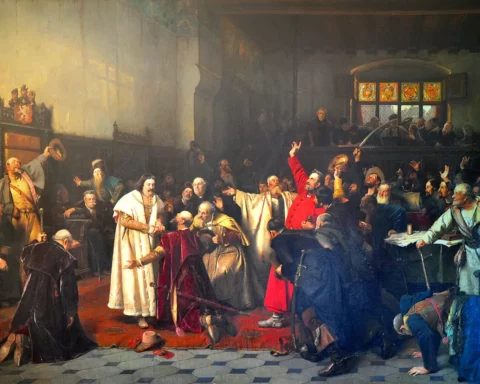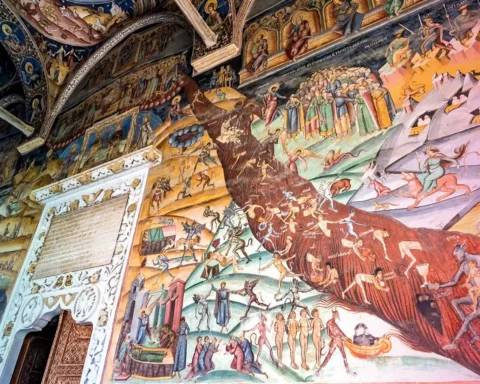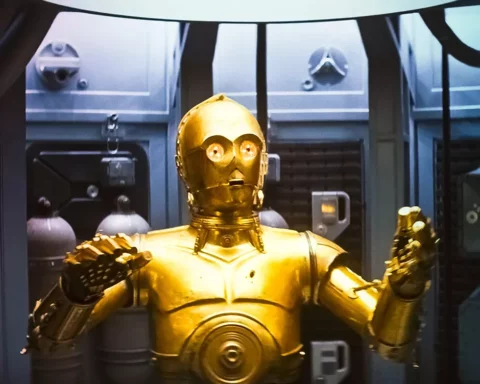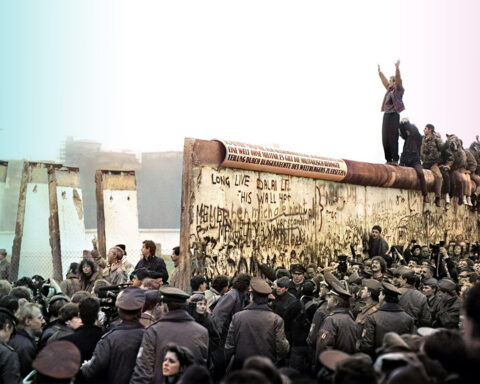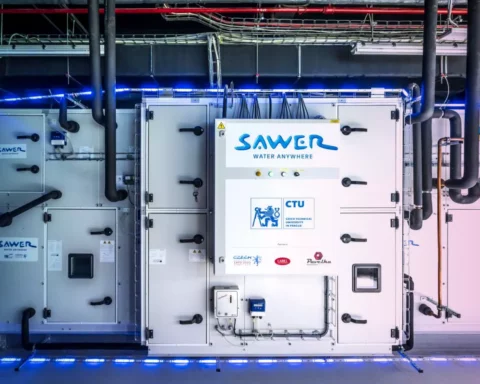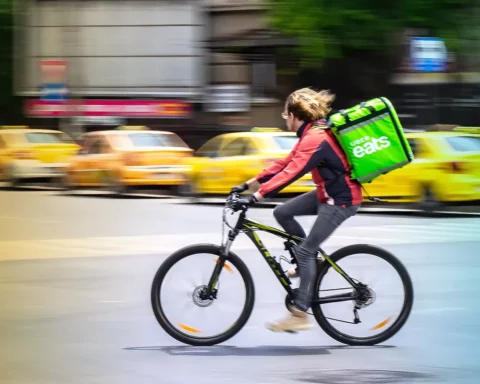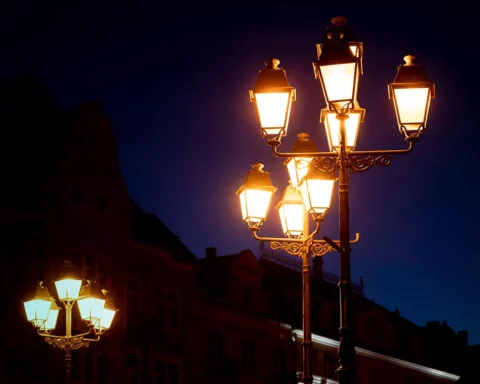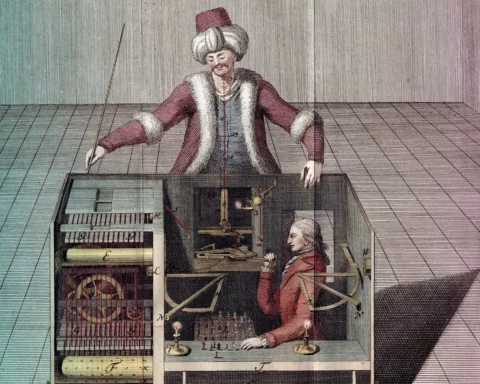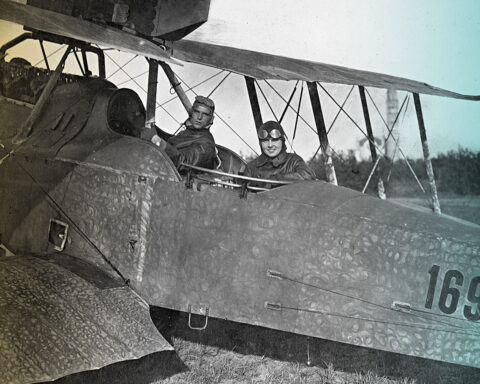A snowboard shaped like a kitchen spatula? An ice cream cone? Batman? Up in Slovenia's Julian Alps, a mad scientist is building unique shapes, and the snowboarding world is taking note.
Few people know that the first jet engine was built by Romanian engineer and aviation pioneer Henri Coandă. This engine was very different from modern designs.
The Three Seas Initiative (3Si), a regional forum for cooperation in Central Eastern Europe, was launched during a summit in Croatia in 2016. Over the years, it has developed into a very ambitious project that has the potential of transforming the lives of more than 110 million people living in 12 states in the heart of Europe.
In Central Europe, the acceptance of traditional EU policies is high. The situation is already different in Western European countries. These two trends will determine the future of the EU.
There are 35 million digital nomads globally. Three Seas Initiative countries are fighting hard to gain a significant share of this community.
Have you ever paid attention to where the drugs your doctor prescribed you come from? If so, you may have noticed that a popular antibiotic for throat infections comes from Croatia.
Lithuanian lasers are very well-known worldwide, with an estimated 10% of world scientific lasers made in the country. This is the story of how a small country has become a powerhouse in innovative laser technology.
The Medieval Wieliczka Salt Mine in southern Poland has many wonders. If a one-day visit is not enough for you, feel free to go on and just spend the night in the underground hostel.
Nestled within the picturesque landscapes of Czechia lies a testament to human creativity and decisiveness – the Baťa Canal. This remarkable engineering marvel stands as a tribute to the vision of its creator, Tomáš Baťa, and continues to play a crucial role.
After the post-communist transition in Romania, Farmec continues its odyssey. The company continued to innovate from Ana Aslan’s Gerovital, which brought it international fame until it became one of the largest regional beauty products producers.
People all over the world wear pants, bras, and pajamas made in Latvia. A lot of the garments originate from Liepāja. How did this coastal city become the Northern country’s unofficial capital of lingerie?
In order to develop, Central Europe needs nothing more than innovation. Countries of the region are more and more aware of that.
Croatian car manufacturer Rimac Automobili launched in 2009 intending to make the world’s fastest cars and has been leaving the competition in the dust ever since. The wunderkind behind the company, Mate Rimac, has no intention of slowing down now.
Bulgarians love their national cuisine. And yet, Bulgarian restaurants are getting harder to find in Bulgaria. Is this a temporary trend or a long-term crisis?
The Czech Passport has been declared one of the most powerful in the world in 2023. Why is that? How many doors does it open, and are Czechs taking advantage of it?
Bucharest has recently unveiled plans to enhance its neighborhood relations with Belgrade in the form of helping Serbia in its aspirations towards joining the 3 Seas Initiative (3SI).
Hungarian company Tresorit grabbed the world's attention in 2013 when it offered hackers a $50,000 prize to the person who could break the layers of defenses protecting their startup. After a year and a half, nobody had cracked the new end-to-end encryption service.
For more than 130 years, the tomato has been a fixture on the Bulgarian table, but today, its production is on the verge of collapse. What is happening to the vegetable still enjoying the status of 'national pride' in Bulgaria?
Is this real life? Is this a fantasy? In Croatia, former Yugoslavia, you can explore abandoned underground airbases. Some of them, like Željava, even have a history of daring escapes from the war-torn country.
Pixel Federation is a game developer and publisher of free-to-play mobile games. The company has been one of the biggest in the gaming industry, producing several games that have attracted 140 million gamers worldwide.
For three years now, residents of the small municipality of Stamboliyski in Southern Bulgaria have been using public transport for free. While the idea introduced by Mayor Georgi Maradzhiev is hardly new, Stamboliyski remains Bulgaria’s only town boasting free public transportation.
Veriff, the company founded in 2015 by the 27-year-old prodigy Kaarel Kotkas, provides technology that enables online identification through a simple selfie and is quickly taking over new markets.
If grabbing a to-go cup of coffee at your local café is your daily ritual, you’re not alone. One company in Bulgaria wants to make that habit as sustainable as possible with their edible, biodegradable wafer cups.
In September 2022, The Three Seas Initiative Investment Fund (3SIIF) acquired a significant interest in BMF Port Burgas, a major port operator in the Port of Burgas on Bulgaria's Black Sea coast.
The sidewalks of Tallinn bustle with people going about their daily lives. They are also full of adorable, 6-wheeled delivery robots ferrying take-out and groceries to hungry patrons. A strange sight to some, here, it's just a part of daily life.
Standing on the street corner, you see a car pass next to you on the road. With a glance, you see a winged arrow logo - a clear sign of a car manufactured by Škoda, an automotive company based in Czechia, which sells cars across the globe.
Greece has become the new member of the Three Seas Initiative. Athens will bring a lot in terms of connectivity. But they also bring their own troubles.
Eponymous with both luxury supercars and the designer of the Beetle, the most renowned democratic car of the first half of the 20th century, Ferdinand Porsche is the most important Czech-Austrian contribution to automotive history.
Printify has spearheaded the quickly growing print-on-demand market, helping regular people to become merchants selling unique products while avoiding storage costs and risks associated with unsold inventory.
One revolutionary Latvian company has improved the gaming experience for hundreds of happy customers around the world. With Azeron's ergonomic keypads, gaming is more comfortable.
Quantum physics is not the most intuitive of scientific disciplines. The group of people who can grasp its essence is quite elite and includes a large proportion of Polish scientists. Will Polish scientists trigger a long-awaited quantum revolution?
The debate seems never-ending: to accept the Euro or keep the Czech Crown? What do Czech people, economists, and politicians think, and is the Czech Republic to get the common currency of the EU?
The second oldest car manufacturer, Czech company Tatra, has a long history of making cars, trucks, and even railway wagons. They were also crazy enough to try this crazy idea: an aerodynamic car!
For several years, the Czech Republic has struggled with the label "montovna" or "assembly plant." What does it mean to be an assembly plant, and how do we eliminate this label?
As you take in the extraordinary sights of the country, especially the city of Dubrovnik, it's easy to see why film crews from massive productions like "Star Wars" and "Game of Thrones" have chosen to shoot some of their most most meaningful scenes here.
In the 1500s, the Persian carpets entered the halls of European monarchies by way of the Ottoman empire. Once these pieces of art were laid out on floors in castles across Europe, they stayed for good.
LNG terminals and pipelines allow for non-Russian gas to flow into Europe: Here's how Greece is rising to the challenge of supporting the EU's energy independence in critical times.
Did you know that you are probably a proud user of the same app as Barack Obama’s barber and Beyonce’s hairstylist?
Businessman, Olympic athlete, or polar explorer. All of them are dressed by Czech companies. And as the old Czech song says: "It's an age-old truth, clothes make the man."
Cardiovascular diseases are the most common cause of death, according to WHO (2020). Powerful Medical, a new Slovak startup, hopes to reduce these deaths by introducing an AI-based diagnostic tool that detects cardiovascular conditions and provides recommendations tailored to patients' needs.
How a Slovenian crypto-exchange led to the rebirth of a legendary lakeside hotel.
With residential prices on the rise, Athens is still attracting foreign buyers. Exactly what is it that keeps them coming?
A battle over payment cards will forever mark the summer of 2023 in the Czech Republic. Is paying by credit card a fundamental human right, or is the saying that "Cash is King" still true?
The success of Polish eCommerce delivery provider InPost has rewritten the map for deliveries in Poland and beyond, with Automated Parcel Machines becoming the go-to choice for people who want to be able to receive packages at all times and without having to pay a fortune.
Ingredients are everything. But increasingly, the region of origin of what you put in your shopping basket also sells. Now, more Bulgarian producers are looking to stamp the European Commission's coveted Protected Designation of Origin (PDO) label on their products.
Greek Startup Orfium promises to reorient music distribution back toward artists, giving them a higher proportion of royalties. Artists will appreciate the better deal, but can the new platform get enough listeners to make it pay?
Despite initially being banned in some countries, Red Bull is now Austria's most valuable brand.
Africa is known for its diamonds, but how many of you know that a European country supplies the world with much more popular, dazzling, and kinder stones to your wallet? There is a chance you own one.
Can Bulgarian fashion designers make a name for themselves in Europe and beyond? 3Seas Europe sits down with some of the Bulgarian designers determined to create in Bulgaria, no matter the various obstacles.
Picture this: a world where you can launch your business online, navigating the digital landscape with ease, in just about 15 minutes, no matter where you are on the globe. That's the kind of freedom Estonia has offered since 2014 with its groundbreaking e-Residency initiative.
Doesn’t it seem that whenever you get sick, there never are any appointments available? Doctor.One, a Polish start-up, developed a unique solution to this problem. So much so that it is heavily invested in, and its future is painted in bright colors.
Looking for a country offering a life-work balance that satisfies your needs? If you live in the 3 Seas Region, you might already be living in one.
Hungary, traditionally not known for its aviation prowess, makes a significant mark in the global aerospace sector with Magnus Aircraft Fusion – an ultralight aircraft, showcasing the nation's innovative potential and dedication to advancing aviation technology.
Polish startup Vasco Electronics has been actively improving upon its technology for the past 10 years. Its device translates conversation, text, and speech into more than 70 languages and is sold all around the world.
Praised for its response to the aftermath of its debt crisis, Greece has been making steady progress in managing economic and fiscal challenges.
Yes, the Austrian Post has a special stamp that says "Missent to Austria" for Australian packages. One recent package was finally delivered with five such stamps all lined up in a nice row.
Looking at the map of rail connections in Europe, you can still see the Iron Curtain on it. But there is a chance that it will be gone by 2030, and CEE countries will have a network of high-speed rail links.
Entrusted by over 2000 schools and childcare centers from over 25 countries, Kinderpedia provides a solution to digitally increase educational management and engagement, making school easier for all parties involved – students, teachers, and parents.
In the past, people were grateful if there was a qualified doctor in their town or village. These days, it is doctors who are grateful for 5-star reviews.
Amanita Design’s hit series Samorost, “Machinarium”, and the slightly lesser known “Botanicula” draw from multiple sources of inspiration, including Marcel Duchamp’s Readymades. But they also capture the spirit of Eastern Bloc cartoons, such as “The Little Mole” and “The Tales of Moss and Fern”.
By combining lessons learned from his time in Sweden and Japan, Péter Árvai returned to Hungary and took the position as CEO of what would become one of the world’s largest visual communications software companies.
Czechia is a car manufacturing powerhouse. But how about Czechs? Do they drive domestic brands, or are they more internationally adventurous?
So perhaps Mr. Wedel did not hide five golden tickets to invite children to his factory, but he wasn't far off. In many ways, he even surpassed Willy Wonka's flamboyant behavior.
We all know the success stories of companies that started in garages. Průša Research's story is similar to those of other multimillion-dollar companies. From humble garage beginnings in 2012 to the second-largest 3D printer manufacturer in the world.
Klaipeda is the main port of Lithuania and the second largest in the Baltic Sea by tonnage. Around 40 million tons of cargo are shipped here annually by almost 7,000 vessels that begin or continue their journey in this hub.
The Czech Republic is currently planning several "super projects." One of them is the Gigafactory near Plzeň. How are the preparations going, and what is the public's general consensus on the projects?
The National Strategy of Research, Development, and Innovation, meant to help transform Slovakia into a country branded by innovation, was recently approved by a government directive. It promises to significantly increase economic wealth and standards of living for the future.
The office market in Sofia has been spared from the worst impact of the COVID-19 pandemic. The feared decline in demand for office space didn't manifest itself but are all threats out of the way?
The region has been becoming a more and more desirable location for venture capital firms. The region is successfully attracting foreign investors as well as generating investment on its own.
When it comes to electric cars' popularity in Bulgaria, the numbers don't look impressive yet. But nevertheless, the signs that a shift might be on the way are starting to appear.
Three Seas Initiative countries want to make the most of the economic opportunities opened up by the development of clean hydrogen technologies.
While Europe focuses on how long Romania and Bulgaria will be kept on Schengen's waiting list, little attention is paid to its unforeseen effects.
The incomes in the hands of the people in CEE countries coincide with the declared economic capacity of their homelands more than in Western European countries.
Following a complicated transition, CEE economies veered from centrally planned to free market systems. This shift reorganization created some of the EU's most dynamic and complex economies and positioned them in the global spotlight.
In response to the outbreak of war in Ukraine, Slovakia created a special stipend program to help students and academic researchers fleeing from Ukraine to integrate into the Slovak research ecosystem.
For such a small country that relatively recently regained its independence, Estonia and its space ambitions reach impressively high within clearly defined specializations.
The fastest internet connection in the 3Seas region can be found in the Baltic states. With one notable exception.
Recently, the digital and tech sectors have grown exponentially across the CEE. With the pandemic accelerating the transition, the region stands to gain EUR 200 billion in GDP by 2030 from these industries. Yet, pursuing this revolution might not be as easy as it seems.
With a growing startup scene that has already launched global firms like Skype, Bolt, Bitdefender, Wise, and Vinted, CEE has some lesser-known places where Europe's unicorns or "soonicorns" are thriving.
Would any country ever give up part of its territory to ensure its continued prosperity? In the 17th century, the Republic of Dubrovnik did just that. How did the Neum Corridor divide today's Croatia and become a cheap tourist oasis?
Central and Eastern Europe have the OECD's lowest wealth gap, with six of the top ten most economically equal countries being 3Seas nations. Why is this, and what are the benefits for society?
Since carrots tend to stick more in consumers' minds than sticks, Romania jumpstarted its green revolution through an array of incentives for electric vehicles instead of restrictions on their fuel-driven counterparts.
The Czech government is getting ready to update the National Energy Strategy. Even though the last one was published in 2015, many things have changed since then, and everyone is awaiting the updated version.
Is hearing the only way one can enjoy sound? No. Latvian startup Stapes is working on a sophisticated piece of tech to allow people to feel it through their bones. This multi-sensory experience brings deep relaxation.
Out of the progress and development that came out of Slovakia during the Covid-19 pandemic, the Q-Vent portable ventilator has caught the attention of many. It has since been further developed and put to use in a remote region of Kenya.
After years of declarations, studies, negotiations, and public procurements, Cluj-Napoca signed a EUR 2 bln contract to build Romania's second metro system (one of the few new ones in CEE).
In a bid to revamp its mostly uncompetitive road system, Romania seeks to spend more than EUR 20 bln in the upcoming years on ambitious interconnectivity projects to freshen up its infrastructure. When these will turn from ink into concrete remains to be seen.
Digitail is the Romanian veterinary software bringing to the animal kingdom what the health system has already implemented for humans – an entirely digital, independent, and complete management solution.
The world's shortest cable car is in the heart of old Zagreb! The cable car has been a symbol of the city and an attraction among tourists for years. Take a [surprisingly comfy] seat and indulge in the charms of exploring Croatia's capital.
The fDi Insights report on the best and the brightest investment destinations is out. Let's see where we stand in terms of the 3Seas Region.
Telerenta is now bringing parts of Central Europe the possibility to rent electronics (like smart TVs) instead of having to purchase them outright, making the dream of having the latest tech at your disposal a reality.
This past May, something big happened at a sleepy airport in Balchik, in northeastern Bulgaria. Dronamics, a Bulgarian drone developer dubbed "The World's First Cargo Drone Airline," successfully completed the first flight of the Black Swan, its unmanned aircraft.
Family-run Diplomat Dental isn't just your run-of-the-mill dental equipment manufacturer. Quite the contrary, they are using their vast experience to push the boundaries of innovation when it comes to production processes and creating some unexpected partnerships in the meantime.
"Hi, you have given me life, and now my role is to represent you like a mirror!" echoed across Romania's Government chambers. This came not from a movie but from the introduction of the government's new honorary assistant, named ION, which is a not-so-simple AI system tasked with gathering data from citizens and voicing their thoughts.
Long gone are the days when making a beloved mix tape involved hours of sitting at your computer trying to download a single song that half the time still ended in an error message. You can thank a genius Croatian invention born from a master's thesis for that.
The war in Ukraine showed all the European countries how vulnerable their plans and infrastructure were. Czechia was no different, so it is now revising its crucial security strategies.
The most well-known wafer biscuit in Slovakia is undoubtedly Horalka, which has reigned supreme for almost 60 years. With a recipe still under lock and key, the sweet treat has won the hearts of many across the world.
After living together for 69 years, a divorce came. Czechs and Slovaks shared many ups and downs throughout modern history, and the split surprised many. But was it really a surprise?
In the hopes of transforming energy dreams into concrete actions, Bucharest aspires to overcome some of its shortcomings by shifting an entire sector. Regional interconnection, smart and green energy solutions, Black Sea exploration, and capacity expansion are all on the table.
The labor market of Central European countries is doing better than in much of the EU. In addition, it is proving highly resilient to unforeseen crises.
The most promising resource of Belarus is rapidly and dramatically shrinking. Already, tens of thousands of Belarusian specialists, IT professionals, and programmers have applied for visas under Poland's Business Harbor program.
The gender pay gap is a topic that has been upsetting the public in recent years. What is the situation in the Three Seas Initiative countries, and is the region better off than the rest of Europe?
The oldest fair in the world has been held in Frankfurt since 1240. How does the Saint Dominic’s fair, held annually in Gdańsk, compare to that result? You might be surprised.
Before peppers came to Hungary, Bulgaria had already made a name for itself as a power to be reckoned with. And while production of locally grown red peppers is down, the Bulgarian pepper refuses to retire.
Almost a century ago, Slovenian engineer Herman "Noordung" Potočnik published his innovative concept for long-term human habitation of space. As is often the case with visionaries, hardly anyone took him seriously at first.
With the last decade of Bulgaria's residential real estate market being marked by steady price increases, many buyers remain surprisingly calm. Why? Because they don't plan on taking up a mortgage, to begin with.
CEE countries have a number of holiday-specific assets. Not only nature and monuments but also well-developed infrastructure and fairly low prices.
Value-Added Tax (VAT) is the most common source of government income worldwide. What is the VAT situation in Czechia and the Three Seas Region, and can the proposed Czech changes ignite a VAT revolution?
Driving European progress, the Three Seas Fund's subsidiary, CARGOUNIT, supercharges its expansion with a game-changing locomotive lease to Romania's Unicom Tranzit.
The renewable energy sector in Europe is fast-paced, filled with high-stakes ventures and potentially game-changing technologies. EUR 150 mln from the 3SIIF will ensure R.Power establishes itself as a leading player in the European renewable energy market.
No restriction plaques here. Interactive and futuristic, the Copernicus Science Center in Warsaw is a paradise for science enthusiasts, kids, and adults alike! Increasingly popular, it provides direct contact with scientific achievements.
It seems that flying drones have reached their optimal shape when it comes to the control and the propulsion systems consisting of four or more rotors. Is there anything else that could be invented in this regard?
Flying cars might seem like the stuff of dreams - or science fiction movies. However, the reality of seeing one in the skies near you is far closer that you might imagine.
Finally! It's hard to believe, but the Polish administration is increasingly relying on digital solutions. The idea of GovTech is breaking the typical bureaucratic inertia in innovating and digitizing the public sector.
Raising over $5 million on Kickstarter, Bird Buddy - a gamified, AI-powered bird feeder - was in the top 1% of all campaigns. A new nation of armchair ornithologists has been inspired.
The next World EXPO is approaching fast. This time Osaka, Japan, will host it. What will Czechia present to impress the land of the rising sun with?
Different Central European countries are investing heavily in the industry around electric vehicles, seeing it as an opportunity to catch up with the developmental lag from the 20th century.
Bulgarians and Romanians are the two nations that are the least likely in the EU to be absent from work due to sickness, data from Eurostat reveals. Exemplary work ethic? Sadly, the explanation lies elsewhere.
With the world largely considering the COVID-19 pandemic a thing of the past, its effects are still holding back one of Bulgaria's key industries – tourism. Add the war in Ukraine to the equation, and the question arises: will Bulgaria's tourism sector rebound (soon)?
Rimac Automobili, the Croatian-based automaker, has delivered its first Nevera hypercar to the United States. The vehicle was personally handed over to its owner by Rimac’s dealer, Manhattan Motorcars, in New York.
A consequence of the war in Ukraine will be the need to increase defense spending. Central European countries are already starting to understand this.
The bioleaching by bacteria can help remove undesired side effects of primary and secondary raw materials and support the growth of desired plants. This biological procedure has been turned into specific services and brought to the market by ekolive from Slovakia.
In the second half of the 20th century, Poland was an IT rarity in the Eastern Bloc. Under the conditions of a centrally planned economy, Polish engineers created successive generations of industrial and personal computers from scratch.
A quick Google search produces promising results: Bulgaria is not lacking in eco-friendly houses. Yet, Bulgarian architects devoted to promoting sustainable architecture say, “Not so fast…”
Romania is the neighbor with such fast Wi-Fi you wish you could borrow their password. Ironically, it's also still a country overly reliant on actual paperwork due to a lack of digital enterprises and services.
What do you get when you gather a team of students from Czech Technical University who are passionate about autonomous systems, speed, and innovation? Electrically powered autonomous Formula.
Bulgaria is not exactly known for its high fashion, and yet, browsing through the offerings of high-end brands in Paris and Milan, the country surely pops up a lot. Especially when it comes to ever-present Made in Bulgaria labels.
Speedtests don't lie. Bulgaria is considered a pioneer in 5G availability and median download speeds in Central and Eastern Europe.
As recent geopolitical and economic realities in the Danube River and Black Sea regions changed, a new dawn for Romania's ports emerged. With increased flows came the need to swiftly expand, adapt and explore potential growth trajectories within the region and globally.
A-frame vacation homes, named after the Brda River in Poland, became popular in the 1970s. The project was so ingenious though that modern architects eagerly returned to the foundations of the idea.
In the last few decades, the idea of a skincare routine has become increasingly popular. Effective products based on natural ingredients are especially valued. And which multi-functional product hides the secret of the Croatian skincare routine?
Latvian startup Aerones has taken on the challenge of introducing robotic solutions to servicing wind turbines, which constitute an important renewable solution for the future. The product has gained widespread attention.
Part two of the CZExplorers series introduces a doctor turned traveler who explored Africa, became a good friend with a King, and fought warriors, leopards, and diseases.
Have you ever forgotten your Facebook password? You probably changed it via SMS confirmation using the service created by Infobip. How did this Croatian start-up become a unicorn in digital communication?
The biotech industry has always been one of the most promising fields in the Lithuanian economy. But the growth it has experienced in the last decade was unexpected for everyone. Since 2010 it has grown tenfold and now contributes around 2.5% to the country's GDP.
After a scandal of large-scale wine adultery in the vineyard heartland of Austria, it was time to tidy up the fallout. What followed was the successful renaissance of Austrian winemaking.
A new high-speed railroad will connect the Bulgarian city of Ruse with Romania’s capital, Bucharest, bringing passengers, trade, and hopes for more positive developments linking the two neighbors.
Did you know it was a Pole that first painted the faces of the biggest Hollywood stars? And another who developed the formula to save our skin from the scorching sun? Meet five big health and beauty brands with Polish roots.
The American-Slovak startup Tachyum is developing the world's first Universal Processor, which promises to speed up data processing and AI learning and help construct a new supercomputer in Slovakia.
Once home to Soviet army officers tasked with spying on the West, today the Latvian town of Irbene is the site of advanced space research. The VIRAC has given a new lease of life to the two giant radio telescopes it inherited.
Understanding of countries from Eastern Europe is more often seen in the countries of the central part of the continent than in other regions of the EU.
Countries across the Three Seas region are steadily improving their proficiency in foreign languages, with Croatia and Poland placed among the top European countries when it comes to knowledge of English. But, the region is not done yet.
In Central Europe - much more often than in Western Europe - more people affirm Kundera's view that "The child makes us care about the world."
If only camping trips weren’t so challenging… Latvia’s BeTriton has a solution! Their amphibious electric vehicle allows crossing terrain and water at ease and eliminates the need to pitch a tent at night.
A tragic accident left a 15-year-old girl with no arms, but Romanian doctors succeeded in reattaching both, performing a rare, almost impossible 20-hour surgery - the first bilateral arm reattachment surgery in Romania.
Central European countries are increasingly aware that developing their own IT capabilities will determine their position in the modern world.
Since 2016, Romania has sat at the top of a very important poll regarding equality in the workspace. What is Romania's secret to achieving a nearly zero gender pay gap, and what is the reality?
The Czech population is gradually aging, and pension reform is nowhere in sight. Will the state be able to cope with the wave of pensioners, or will the title of the Cohen brothers' film apply: "No Country for Old Men"?
Organs-on-a-chip are not a thing of nightmares. Quite the contrary, Latvian startup, Cellbox Labs, is pioneering a way for this smart technology to revolutionize drug discovery.
With over 95% of the population owning their homes, Romania leads Europe - and possibly the world - in home ownership. How did this happen, what role did communism play, and how is the trend still going strong, even 34 years after the fall of the regime?
Bulgaria hasn’t been blessed with limitless supplies of natural gas, but the country is still looking to play an important role on the gas market.
One of the most ambitious geopolitical projects of our time is getting closer to completion. Investment in communications infrastructure, which is the very foundation of the development of the Three Seas Initiative, is gaining the highest priority.
It was to rule the waves and lead the Austro-Hungarian Kriegsmarine to victorious battles. Alas, it was sunk by a small torpedo. The first and last Hungarian battleship's fate is also linked to the story of a certain Polish invention.
It started innocently enough. The first presentations of an autonomous land drone designed by the Estonian company Milrem showed a vehicle capable of carrying wounded and supplies. Meanwhile, THeMIS grew claws and saw real combat.
The history of Leo Sternbach, the inventor of benzodiazepines, including Valium, is as Central European as it gets, requiring mention of about half a dozen of countries from the area.
An inconspicuous product from the Czech suburb of Pardubice became the terror of the whole world and was the basis of the armament of the entire Eastern Bloc. What is the story of Semtex?
The countries in the Central European region are very serious about economic freedom and supporting entrepreneurship. This is confirmed by the Index of Economic Freedom.
Saving lives since 2016, Záchranka started as a bachelor's thesis idea and became a fully-functional mobile app interconnected with rescue service systems.
How long did it take until Bulgaria found its current location in southeastern Europe?
On April 24, known as Armenian Genocide Remembrance Day, Armenians in Bulgaria will pay their respects to the victims of the systematic murder of up to 1.5 million Armenians, which took place in the Ottoman Empire in the early 20th century.
In a world where neurosurgery was considered to be an inherently masculine domain, Sofia Ionescu made history during the Second World War when she first operated on a young boy, officially becoming the first-ever woman to perform brain surgery.
Optimatik, a startup from Wrocław, aims to make the most out of the logistics industry’s transition to smart solutions. Its product is aimed at helping coordination between human and robot-run devices in facilities by tracking their movement through a 5G network.
The Czech Republic stands at a critical crossroads for the future of train transport. While some dream of high-speed rail, others fear for the survival of trains. Will the Czechs get their TGV?
The digitalization and development of the Internet have created a new operational domain – cyberspace, vulnerable to hostile actions that only a few countries are prepared to repel. One of them is Estonia.
Czechia has one of the lowest unemployment rates in the whole EU. Is it a curse or a blessing in disguise?
The attitude to history very much distinguishes Central Europe from Western Europe. The war in Ukraine means that these differences will remain present for many years to come.
The premiere of the new season of the Bulgarian edition of "The Bachelor" quickly revealed that many of the women fighting for the heart of the man in the spotlight have one thing in common: an affinity for injectable facial treatments and plastic surgery. What makes Bulgaria a special case when it comes to beauty enhancement?
Slovakia has a tradition of constructing self-propelled Howitzers mounted on car wheels. The current model, Zuzana 2, is an upgrade to a 50-year-old tradition of Howitzer-making and is one of the most modern of its kind in the world currently in use.
A group of scientists from Brno has made a revolutionary discovery. What sounds like science fiction is within reach: light without electricity!
Two years ago, there were claims that the Polish Solidarity Transport Hub was unnecessary since the infrastructure of Western Europe is sufficient to transport people and goods over long and short distances. It turns out that the opposite is true.
Dreams of future coastal cruising along the beautiful coast of the Black Sea.
For the last three years, two driverless buses have been operating on the outskirts of Vienna. The project has so far been a success and a source of inspiration for other potential models in the 3 Seas region, as well as elsewhere.
Slovenia has renewed its interest in playing the role of gas hub using the same resources that were abandoned in 2012 due to economic reasons in favor of cheap Russian fuel.
An innovative student project aimed to bring Brno online, and it succeeded. Not only can you roam the city, but you can also build in it! All thanks to a group of students and Minecraft.
The war in Ukraine is having unexpected effects far and wide. A key source of protein for countries in the Middle East and India, the demand for chickpeas outstripped the supply, with both Russia and Ukraine being among the top producers. Can small players familiar with the crop, like Bulgaria, step up to the challenge?
Estonia is currently testing an online writing tool to speed up the transcription of court sessions. Available to both in-person and online sessions, Salme can accurately write down who said what in the courtroom. Its potential is promising.
God created man; Sam Colt made them equal. Now, the legendary American Colt manufacturer belongs to a Czech company. With this acquisition, Czechs are currently at the global top of gun manufacturing.
For 50 years, the Polish company Melex has been creating EVs, which sell like hot cakes all over the world - long before electric vehicles became fashionable.
Central European countries are successful in attracting investment from abroad. But they are also increasingly becoming exporters of capital for investment themselves.
An Austrian company has created a GPS tracker that can be placed on the collars of cats and dogs to bring more safety to pet owners. The smart design of the product switches between satellite and WiFi connection to provide a constant location online.
In less than 30 years, the blind population of the world is expected to increase to over 100 million. dotLumen aims to provide solutions to accommodate, empower, and enable the visually impaired to live life to the fullest.
Bram Stoker and Jules Verne, defining figures in the world of literature, took great inspiration from the Romanian lands - despite having never stepped foot inside the country.
There are only a handful of countries around the world where Coca-Cola does not reign supreme. Czechia and Slovakia are among them. Meet Kofola, the socialist Coke alternative introduced in the 60s, still holding strong and topping the soft-drink market.
Many most critically acclaimed games were developed in 2022 by Central and Eastern European GameDev studios. What makes them unique are the ideas, the audio-visual design, the technology, and the fresh, inspiring touch.
The past year of the war in Ukraine was also a year of forging an awareness of the common destiny of Central Europe.
The growth rate of e-commerce in Central Europe can be seen as a kind of litmus test for the quality of cooperation in the region.
Necessity is the mother of all inventions. And sometimes, it literally takes a mother to invent an ingenious prop that makes parenting that little bit easier and goes viral. Meet Szumisie.
The study called The tumultuous 2022: how has Russia’s aggression on Ukraine impacted the 3 Seas and Rest of EU-27 countries? presents a collation of key energy sector and economic data on the Three Seas countries compared with Rest of EU-27 countries.
The discovery of the 17,000-year-old Venus of Piatra Neamț figurine in North-Eastern Romania in 2019 was supposed to be an archeological miracle. However, some eagle-eyed journalists discovered that certain puzzle pieces do not fit into the story.
The Tokaj region, famous for its wines that have been prized since the 18th century, became an official appellation in 1737, some two centuries earlier than the famous Burgundy.
Before becoming a genius physicist, Marie Skłodowska-Curie was a Polish language teacher and a national-democratic activist.
A corpse found on the border between Austria and Italy seemed so fresh that the tourists who found it called the police. But it was archeologists would eventually dispute the nationality of the ice man.
Carebot is on the way to implementing AI suggestions into CXS and MMG screenings in hospitals in Czechia. Led by two young enthusiasts, it stepped in at a crucial time to account for the need for innovations in healthcare with an offer of promising conduct.
The Witcher - a successful Netflix series, a mind-boggling game, and… a musical. All of these are spin-offs of a highly witty fantasy saga. So where did it all begin?
Unbeknownst to the majority of people filling the streets of Prague, there is a nuclear reactor in the center of the city. What does it do? Is it dangerous? Or is it a future of commercial use of Small Modular Reactors?
Bulgaria and Romania share 609 kilometers of border. And yet, despite the fact that the Danube River forms as many as 470 km of that border, the two countries are linked only by two bridges. Is this about to change?
Croatia has been the number one vacation spot for many Czechs. Is this still the case, or have Czechs changed their vacation preferences and are venturing outside the Three Seas region?
Enthusiasm for nuclear energy in Poland is not waning. In addition to the full-size Korean and American reactors, another one will be built. The National Center for Nuclear Research, with the help of Japanese specialists, will design a new experimental reactor.
Due to its history, Central Europe is very sensitive about its own security. That is why since the outbreak of the war in Ukraine, the importance of the EU in the eyes of the people of CEE states has started declining.
The EU’s net-zero goal by 2050 essentially means that it wants to cut greenhouse gas emissions to as close to zero as possible. A tall order, and a major component of that will require more renewables like wind and solar, among others.
Many countries have their own versions of one-ounce gold coins treated as a form of investment. But globally, the most important commemorates Vienna’s dedication to music.
An experiment in testing a fourth brake light in the front of the car, in between lights, is currently underway. The aim is to increase traffic and pedestrian safety to decrease casualties of pedestrians and drivers.
Bulgaria is beginning preparations for minting Euro coins, according to an announcement made by Bulgarian President Rumen Radev. The process of replacing the Lev with the common European currency is gaining momentum, at least in the symbolic sphere.
Most of the Three Seas Countries are considered to be emerging innovators by the European Innovation Scoreboard (EIS). Which ones are they, and what does it mean? Are there any strong innovators among us?
The decline in the number of marriages and the rise in the number of divorces are ongoing trends in Europe. But in CEE countries, this trend is taking a much slower path. And there are examples of countries where it is even reversing.
Decades before Anthony Bourdain set out to enlighten a hungry population of would-be food tourists and future foodies about the exotic world of international gastronomy, there was Emil Markov, who was on a mission to bring Bulgarian cuisine to the world.
The people of Central Europe dream of becoming ordinary, average inhabitants of Europe, its middle class. This dream is driving CEE countries - but it is also coming true more and more.
The Hungarian-born startup Colossyan has been developing AI-generated media production, run by AI and machine learning, in a less well-known field of innovation. Its product offers the use of clients’ avatars in video footage.
Bulgaria and wine, it’s serious. So serious that Bulgarians honor Saint Tryphon, patron of vine growers and winemakers, not once but twice a year. But is this enough to help Bulgarian wines conquer demanding markets abroad?
Three Seas countries are attractive investment destinations for global corporations. Can it also result from the fact that people in the region can work longer hours than their Western European counterparts?
CEE countries keep their taxes lower than Western states. In this way, they effectively bridge the gap in economic development between the two parts of Europe.
If you aren’t as well-endowed as you would like, the best strategy is to make optimal use of what you do have – just like Slovenia does with its seemingly insignificant access to the sea.
Today’s race for the tallest building in the world is usually a competition between the United Arab Emirates and China. However, a few short centuries ago, St. Olaf’s Church in Tallinn held the title. (At least, maybe it did.)
Warsaw-based startup Tylko has been promoting its D2C (direct-to-consumer) model in the furniture industry. The model is supported by software that allows for a virtual fitting of the desired furniture into existing rooms and facilities.
We know – pockets are getting smaller, and wallets are only becoming heavier. This would be no problem for the world’s tiniest print money – which measured a mere 27.5 x 38 mm. How much could you fit in your pocket?
DeepL Translator is known as a widely used online translating service web page and app. However, little is said about its background story and mysterious AI technology, as well as the key protagonist behind the success.
Bulgarian businesses need more help from foreign workers. As challenges persist, how can Bulgaria fix its labor shortages?
People living in Three Seas countries are much less prone to taking loans than citizens of Western European countries. This division is so strong that it goes beyond simple economic choices.
Central Europeans have bigger trust in international institutions than in their own national ones. The best evidence of how slowly social stereotypes evolve.
Czechia is an aviation superpower. It's one of a handful of countries worldwide that can manufacture an entire airplane – from nose to tail. And Czech aviators and pilots are mighty proud of it.
Flying to Bulgaria is easy, but that is not exactly the case when it comes to flying within the country. But work is underway to add six much-needed small facilities to Bulgaria’s minuscule airport network.
Every winter, Estonians can take a shortcut to their islands through the frozen surface of the sea. The roads are even officially recognized by authorities.
2022 marks the one-hundredth anniversary of the word “robot,” brought to you by famous Czech science-fiction author Karel Čapek. However, the term, actually coined by his brother, has deep historical ties to centuries of feudal economics.
The issue of atomic energy for Poland is accelerating. Three major players – reactors manufacturers - were fighting for the contract to build Poland's first power plant. The showdown between them was as if modeled on the Game of Thrones intrigues.
Some say that the woods in Poland's Masurian Lake District harbor a secret: that an abandoned channel project from the Polish Lake District to the Baltic Sea wasn’t only for an inland trade route - it was to provide access to a secret German WW2 era submarine shipyard.
There’s a fierce fight brewing between three competitors vying to build the fifth nuclear reactor of the Dukovany Nuclear Power Plant in Czechia. Who is most likely to win?
If this grapevine could talk, oh... the stories it could tell. Wars, plagues, and fires haven't been able to stop one remarkably resilient vine in Maribor, Slovenia, that is still producing fruit - and wine - at a ripe 400 years old!
Until 1989, Europe was partitioned by the Berlin Wall. Now, it is divided by the Great Wall of China. CEE countries are looking at Beijing with caution, but Western European states are looking for business opportunities with China.
Wherever you are flying with Czech Airlines, it will always be OK. Why? Because OK is the Czech Airlines callsign. Let us tell you the story of the fifth-oldest airline in the world.
Ready to channel your inner Indiana Jones? Maybe walking across the world’s longest suspended sky bridge, hung almost a hundred meters above a valley in Czechia’s Moravia district, would help you do the trick.
Those traveling to Europe often think it will be sufficient to bring along some Euro, but this is not always the case. So what currency do you need when you find yourself in the Three Seas States?
How modern gardening gave the beginning of the Bulgarian community in Hungary?
It looks like the renaissance of nuclear technology is beginning. Countries in the Central European region are leading the way.
The sources from which we generate electricity have become the center of attention of every European in light of recent events. Austria's energy mix is one to envy, and here's why.
The new railway network will connect all of Poland’s larger cities with a mega-airport near Warsaw as well as connect Poland with neighboring countries.
Households in Central & Eastern Europe are still in the process of building financial wealth. It makes these economies vulnerable to adverse shocks, but it also makes the region an attractive investment destination.
Austrian startup Blue Planet Ecosystems has been presenting its product on efficient, bio, eco-friendly, and sustainable fishing production called LARA systems (Land-based Automated Recirculating Aquaculture). The product aims to address future food shortages.
Some say that cultural divides can be explained by the kind of alcohol we imbibe. But is there any actual distinction between "vodka Europe" vs. "beer Europe" vs. "wine Europe"?
The architecture MasterPrize award is open for entries from architects at every stage of their careers. It is considered the second most important out of the five leading international awards in architecture. This year, Poles were among the winners.
A Slovenian-based high-tech startup has been developing a complex and self-learning driving test simulator with the aim of measuring conscious and unconscious driver behavior features to make driving safer and more inclusive.
The Czech Republic has recorded a gradual increase in the number of children born in the country - proof that an effective pro-natalist policy can be pursued. It seems that the key is maintaining respect for the value of the family.
The Ruse-Varna railway line, the original final stretch of Europe’s Orient Express, is about to be modernized, benefiting Bulgaria, the EU, and the Three Seas Initiative.
While Bulgaria hasn't exactly been the first country to come to mind when one thinks about the most fertile ground for startups, that is all about to change.
Created in 1766, Vienna’s Prater is one of the oldest public leisure spots on the continent. The amusement park in the center of Prater began operations in the 18th century.
Matsuko is a Slovak startup that offers a unique experience of communicating through holograms. The application they developed creates holograms of actual persons who can communicate in a virtual space and encounter each other as if it was real.
A massive level of inflation in Hungary created the need to issue the highest-nominated banknote ever.
The unique technological project of a garbage disposal ship offers a new solution to ocean pollution.
The Lithuanian medical startup Oxipit has harnessed AI and Machine Learning into radiology. By scanning and analyzing chest radiographs (CXRs), ChestEye and ChestLink, the apps detect pulmonary module signs of pneumothorax and other lung diseases.
Czech scientists are tirelessly working on creating an artificial Sun that will help Czechia, Europe, and the whole world access unlimited energy.
Hungarian-American startup SignAll has been intensely working for over a decade to invent the SignAll Lab tool, which translates American Sign Language (ASL) into American English.
The Hungarian startup SEON Technologies, currently based in London, has introduced an app that determines the risk of online internet profiles. The product became very popular among companies and casual users as the world went online during the Covid-19 pandemic.
Bulgaria might not be known for its fashion brands, and yet one local company is keeping Europeans fashionable.
Developing since the 1980s, Latvia's sea buckthorn industry is now well and truly ripe. Not only is export on the rise, but growers are creating new products to introduce people to the vitamin-packed berry and its powers.
Polish citizens, who found themselves under a foreign rule for 123 years, were often forced to leave their native lands in pursuit of opportunities unavailable to them under new rulers. Collectively, they are referred to as Polonia.
There is undoubtedly more optimism in Central Europe, looking at the future through much brighter glasses. This applies to the labor market - but not only.
Generation after generation of Bulgarians was raised with eyes on the prize: Owning a home. With prices in Bulgaria reaching new heights, has the time come to let go of that dream?
Although interwar Poland had unrealized ambitions to become a colonial empire, the truth is that at some point, in fact, it was one. Here’s the surprising history of the Polish-Lithuanian Commonwealth as a seafaring metropolis.
Computer games are much more than just a childish pleasure. In the case of Czechia, it is a 250-million-Euro industry making the country famous worldwide.
The Czech City for the Future project shows one options of how people will live in 2050. The goal is to make every city a living organism rather than a sea of concrete buildings.
In 1923, Romanian engineer Aurel Persu concluded that aerodynamics played an important role not just up in the air but down on earth, too. By introducing wheels inside a car's frame, he successfully built the very first aerodynamic vehicle.
Have you ever seen a drone? People use them for taking photos, videotaping, or just for the simple fun of flying. But how about a drone postman or drone firefighter? Just Czech inventions.
Fish farming in Czechia has a tradition dating back to the early Middle Ages. It helped the landlocked country to secure enough fish supply. What started as a food variety necessity became part of national identity and Czech culture.
A new Slovak startup, DNA ERA, generates unique insights from DNA saliva extracts. Whereas most businesses that conduct DNA analysis offer information about family history, DNA ERA looks at hereditary diseases, physical aptitudes, optimal nutrition, and other clues stored in our DNA.
People from the Polish town of Ząbkowice Śląskie see their connection with the first proper science fiction novel ever created. And there's a reason for that: until 1945, the city was known by its German name: Frankenstein.
Koffeco, a sustainably-minded science-based startup from Latvia, sees spent coffee grounds as a resource. The team transforms organic waste into new products, contributing to a circular economy.
The Danube-Oder-Elbe water corridor is the missing link that would connect Czechia to the rest of the European waterways. This multifunctional water project could raise the global importance of the Three Seas Region in the World Economy.
This clever ticket vending machine doesn’t take cash or cards. Instead, it requires you to do 20 squats for a free bus ride in exchange. And Romanians love it.
The Czech family-run startup Ullmanna is one of few to have developed an AI machine for agriculture. The flagship product, an intra-row weeding machine called NEWMAN, removes weeds manually faster than you can even spot them.
Women in Central Europe have long played an important role in the home and also in public spaces. Centuries of fighting for independence, defending against the Nazis and the communists have meant that women in this part of Europe have emancipated themselves in many fields relatively quickly compared to other parts of the world.
Central European countries were the first to experience the shock of neighboring an open, full-scale war. But watching their reaction also shows that they will be the first to adapt to the new reality.
Tired of choosing the same old destinations for your holidays? Why not try something new! Central and Eastern Europe has lots to offer!
For the past eight years, a Polish inventor, Łukasz Koźlik, has been fulfilling his dream of building a robot that he hopes will eventually become our best housework buddy.
That, my friend, is an excellent question. Everyone seems to know where Western Europe is. And everyone seems to be an expert on calling everything else the East. But hey! What happened to the Center?
Born in Piaski Szlacheckie, an inconspicuous village near Lublin, Poland, Antoni Patek made his name as part of the most prestigious brand in the history of watchmaking. A true trailblazer in the industry.
Spanning from the Netherlands to Baltic Countries, this important trade and geopolitical project had an enormous impact on Europe’s history. Consequently, some seaside cities across Europe are more like each other than to other cities in their respective countries.
Socialist Romania struggled for a position on the map of Eastern tourist destinations for Western visitors. In doing so, it lured tourists with long-legged waitresses and Elena Ceaușescu.
In October 2022, Russian forces held a sham vote on annexing parts of Ukrainian territory to Russia. In response, the Czechs invented a claim to the Russian enclave on the Baltic Sea. Its basis was simple: Kaliningrad, formerly known as Königsberg, was named after the Bohemian king.
This anti-virus service has been leading the cybersecurity market for over 21 years – and I bet you had no idea it was a Romanian company that provided it. Bitdefender was Romania’s first ever IT start-up and the world’s leader in cybersecurity. And it all started by accident.
Beautiful lavender fields are the perfect Instagram photo-op. Just pay attention to the location tag: You’re not in the south of France but in Bulgaria. In fact, lavender is so prevalent in Bulgaria that it has been competing with France for years now for the title of top producer.
Over the last several years, the Three Seas countries have seen astonishing success in exports. In order to continue that success, what is needed now is diversification.
Scientists around the world are sounding alarm bells about the dwindling number of bees. With this in mind, Latvian startup BeeSage has created a monitoring system to give beekeepers the tools and information they need to ensure their hives can thrive.
Lithuanians brag about the mildness of their native language. So in order to keep it clean, they simply use either Russian or English whenever they want to say something particularly naughty.
Shumen, in northeastern Bulgaria, is so linked to its cafes - in particular, its main café-lined street - that one of its former mayors floated the idea of applying for an entry into the Guinness Book of World Records as the longest café in the world.
Commonly known as a "Maluch” (Eng: "the little one”), the Fiat 126p was a car that Poles dreamed of for decades. Even though it's been out of production for years, it is still attracting unexpected admirers. Like Tom Hanks (yes - that one).
George of Poděbrady, the king of Bohemia in the 15th Century, came up with a crazy idea. He dreamed of creating an organization to include all European nations. They would hold important meetings on an international level and vote on topics in a parliament-like manner. Crazy right?
The debate about the legacy of socialist residential architecture in Bulgaria, and the need for changing it, is ongoing. Should neighborhoods’ names follow suit?
The iconic Palace of Culture and Science is a monumental skyscraper in Warsaw's city center, now considered somewhat controversial due to its Stalinist genesis. Even so, it turns out that Varsovians now have a soft spot for this cultural landmark and do not want to see it demolished.
For decades in the 20th century, Bulgarians and Romanians, two neighboring nations sharing 609 kilometers of border, knew little of each other. Today, 15 years after the two countries became members of the larger European family, things are changing for the better.
Prince Constantin Brâncoveanu built this holy place as a place of worship. Today, it is a UNESCO world heritage site that stands tall not just as a meaningful clerical site but also as Romania’s most emblematic piece of Brancovan architecture.
In one scene of "Return of the Jedi," a protocolar android addresses a person in Polish. Was Jabba the Hut's servant a Socialist economic migrant, or did American producers just want to impress viewers with an exotic language?
CEE countries lost almost 50 years stuck on the wrong side of the Iron Curtain. Although the Berlin Wall fell more than three decades ago, they still have not managed to make up for the years wasted by communism.
S.A.W.E.R. is a strange, shipping container-looking device that works miracles. What is this miracle, you ask? Well, it creates water from desert air! That's pretty miraculous; what do you say? And it gets even better: it runs on solar energy!
Countries with the right balance between services and manufacturing economies are more resilient to various shocks. This is the lesson from the crises in the last two years, and Central Europe has done its homework.
When World War Two ended in Central Europe and the Iron Curtain, as famously called by Winston Churchill, descended “from Stettin in the Baltic to Trieste in the Adriatic,” the eastern side of the curtain began filling with monuments of victory. In August 2022, yet another of those monuments fell.
Forget about Paris and London – the Romanian city of Timișoara paved the way for Europe’s transition to electrical street lighting. Discover the story behind the original City of Lights.
3SeasEurope sits down for an interview with the Deputy Secretary-General of the OECD Jeffrey Schlagenhauf.
Most people assume that AI is a product of our time while, in fact, engineers have been seeking to discover it for centuries. The vision of designing a machine superior to the human mind caught global attention as early as the 18th century.
The results are in, and if you’re a salad lover heading to Bulgaria, you’re up for a treat. In TasteAtlas’s 50 Best Salads ranking, four Bulgarian salads make the cut. Ovcharska (Shepherd's) landed the #1 spot, with Snezhanka and the famous Shopska Salad – also in the top 10.
People, goods, and mail were moved by air for the first time at the beginning of the 20th century. And the first regular route for long-distance air travel was between European cities in Austria-Hungary.



